By not much later 9 AM we’d been helped into the zodiac by a middle-aged man dressed in nothing but a loin cloth and we were dancing with two teenagers, a boy and a girl, both bare from the waist up.
Yes, most women and men of all ages don’t feel the need to cover themselves hardly at all as you can see from the pictures. Rather than being disturbing, it quickly became for us quite natural. They are an extremely friendly bunch and made us feel right at home.
Welcome to Playa Muerto – the beach of the dead, so named because during a battle for control of Panama City, the prevailing Pacific currents brought the bodies to this idilic beach. Or maybe it was the bodies of sailors lost at sea or pirates made to walk the plank. Opinions differ on the point.
Playa Muerto is also the name of a local community of the Emberá, our hosts for this morning’s visit. It’s located in Darien National Park, which contains the beginning of the Andes mountain range. Yesterday we viewed the mountains that mark the southernmost end of the Rocky Mountain Range. Technically, while still in Panama we’re actually now in South America here.
The Darien region is infamous as one of the main paths for illegal migrants escaping Venezuela and for other peoples trying to escape oppressive conditions around the world. Playa Muerto isn’t a major corridor, but we did see two Panamanian border guards in the town and on the beach today. One of our guides said that the survival rate for people making this trek is very low.
When we made our “wet” zodiac landing, we were greeted by men and boys who managed the boats and helped the gringos onto the sand. There was a Emberá band playing – a flute and percussion instruments – and kids came up to take our hands and walk with us to where we could dance with them, a simple two-step number in time with the band. Then the kids led us by the hand down the beach and up the side of the hill to a lodge-like structure for the main event.
The Emberá of Playa Muerto have the advantage of being closer to the beach than other tribes, so they attract the tourist trade, which has become an important part of the local economy. Today, the Emberá had invited people from a neighboring community to come and participate. We were treated to dances, two numbers by girls from Playa Muerto, one by local ladies and one number by ladies from the visiting community.
Following the show we visited a number of booths set up to sell the wares of local craftspeople. We bought five items totaling $60. Nice stuff and a good way to contribute to the community, we figured.
Maybe I’m reading too much into it, but I think I noticed behaviors of the youngsters that are universal across cultures. Young boys and girls – say 6 to 10 – acted just like kids back home. I think I noticed that girls, especially, in their teens congregated together and talked about who-knows-what – boys? Boys seemed to be on the sidelines for the most part.I even saw a couple I took to be young lovers.
The people here speak the native language as their primary but Spanish is taught in the schools. I had fun using by broken Spanish to talk with the kids, asking them their names and ages and other Spanish 101 stuff. I find it easier to use Spanish on kids; I feel that they’re a lot less judgmental than adults.
One young gal held our hands as we returned to the zodiacs. Every few feet she’d stop and draw designs in the sand. I joined in with a crude smiley face. She responded with a much more sophisticated image of a person. As a test, I drew 1 +1 and a line to see if she’d draw a 2. Nope. She used my lines as the starting point for a very nice design of her own. A real artist.
This afternoon one of our naturalists, Herman Araúz, gave a talk about the Darien region. It happens that his parents were pioneers in exploring the Darien. His father was the first to map the region. His assignment was to find a path for the continuation of the Pan American Highway – to close the Darien Gap.
It’s possible to drive from Barrow, Alaska to Ushuaia, Argentina on a single road. All the way, that is, except for the Darien peninsula. It’s been extended a bit based on his father’s work. Before he died he told his son, “Don’t let them stop the highway. It’s my life’s work.” His son, the naturalist, hopes that his father’s wish won’t come true for many, many years. He fears that deforestation and loss of biodiversity will result.
His mother, Reina, was a famous anthropologist who explored the Darien with her husband in the first trans-Darien expedition in 1960. Here’s an excerpt from Wikipedia:
Reina Cristina Torres de Araúz(née Torres Pérez; 30 October 1932 – 26 February 1982) was a prominent Panamanian anthropologist, ethnographer and professor. She is considered to be a “tireless defender” of Panamanian heritage ethnography.
https://en.wikipedia.org/wiki/Reina_Torres_de_Araúz
They had first contact with native peoples and, as an anthropologist, she studied them extensively. Today when Herman show photos and movies to the Emberá people, they are amazed how much their lives have changed since the middle of the last century. Before, families lived apart from others. It wasn’t until the mid 1900s that they began to congregate in communities like the one we visited today.
At 4 PM the ship’s crew served cake celebrating Tauck’s 100-year anniversary. They then gave us an overview of tomorrow’s activities: we enter the Panama Canal around 8 AM. It will take 8 to 10 hours for the complete transit. We’ll be especially on the lookout when we pass Gambia where Bill and Elaine Duffus lived for 20 or more years.
By the way, the bird of the day is the Brown Booby, cousin, I’d guess, to the Blue-footed Booby we saw at the Galápagos Islands years ago. A flock of them have been following the ship for the past several days, diving into the water to pick up the fish stirred up by our passage.
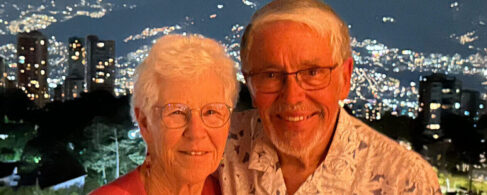
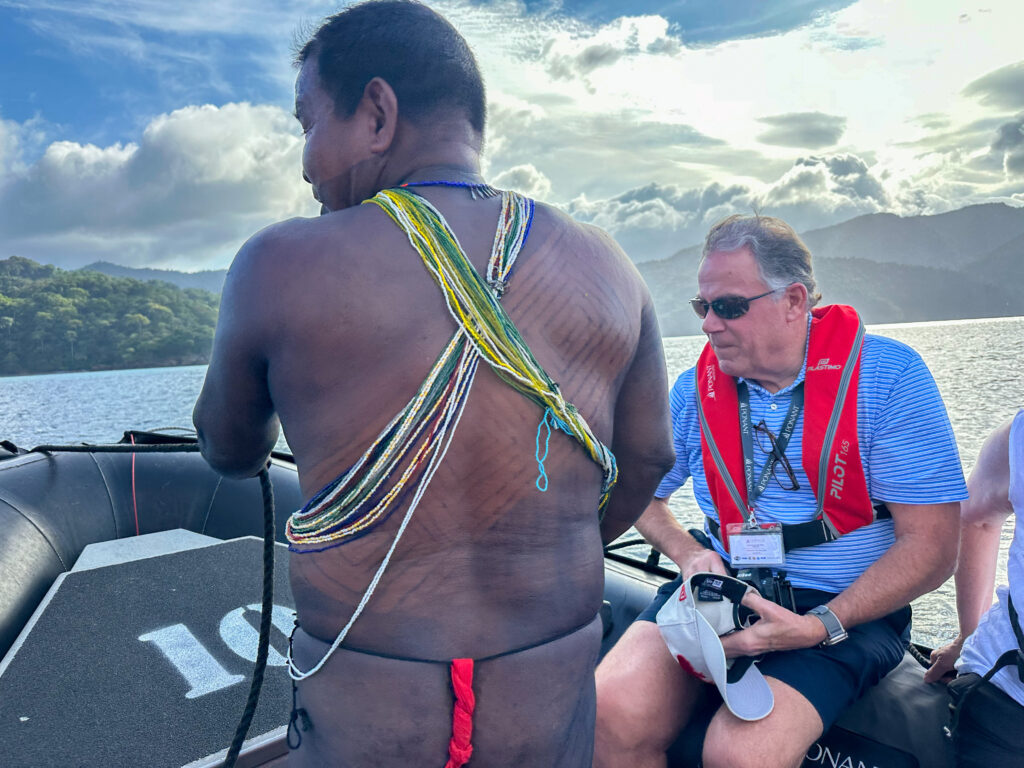
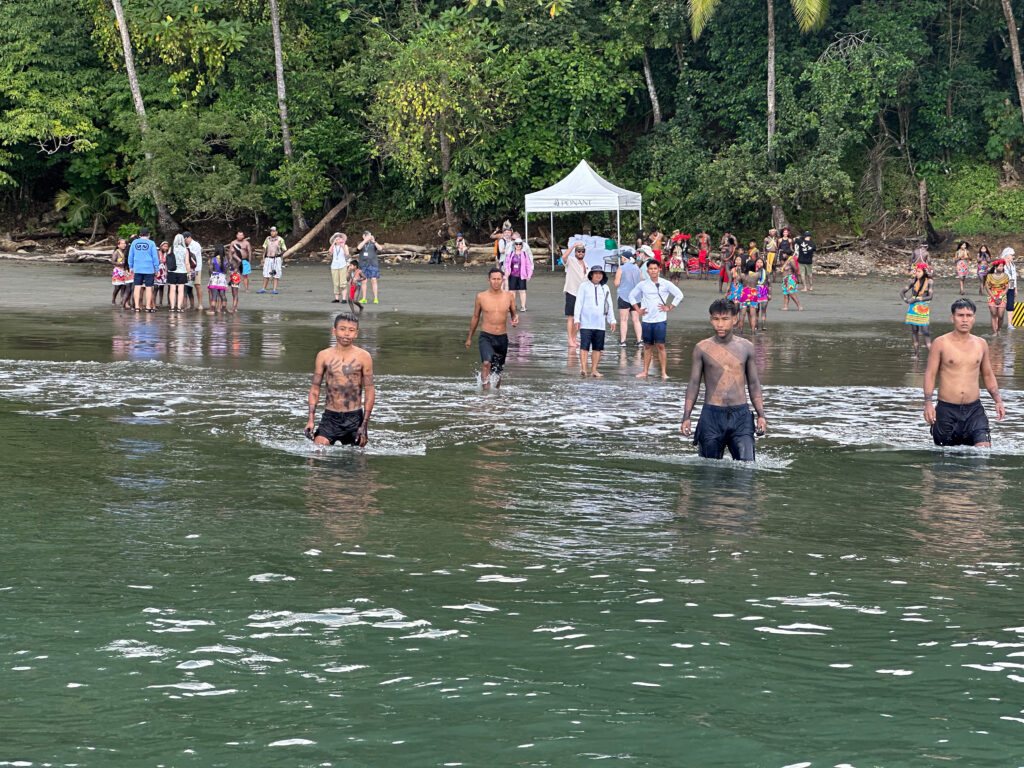
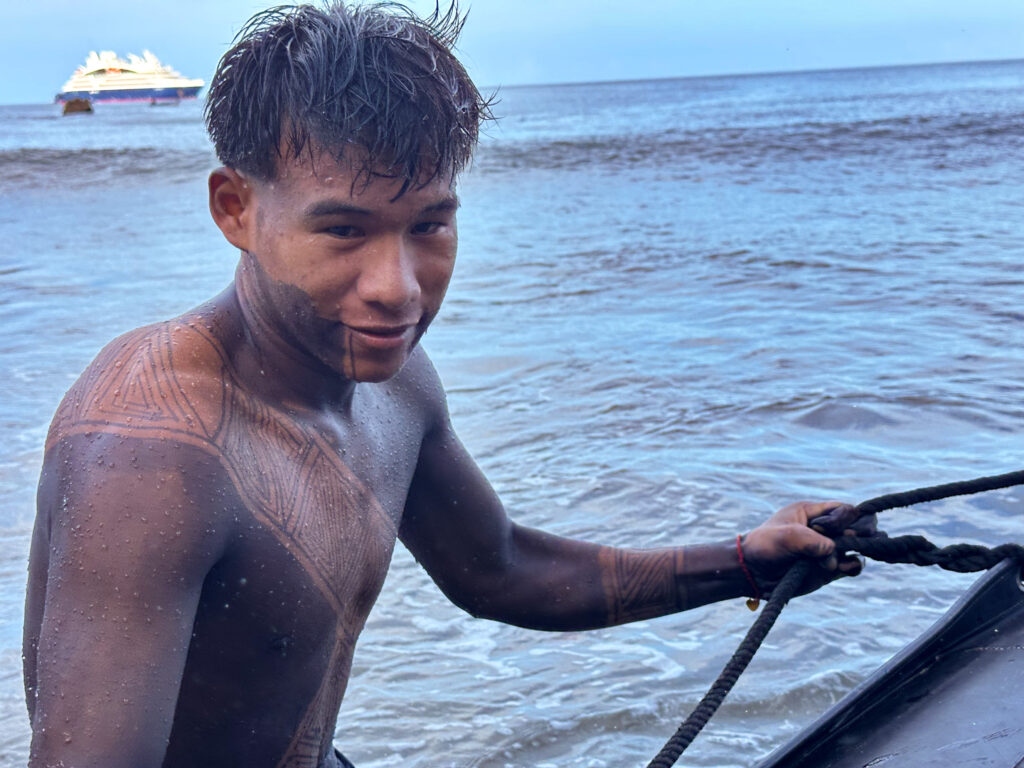
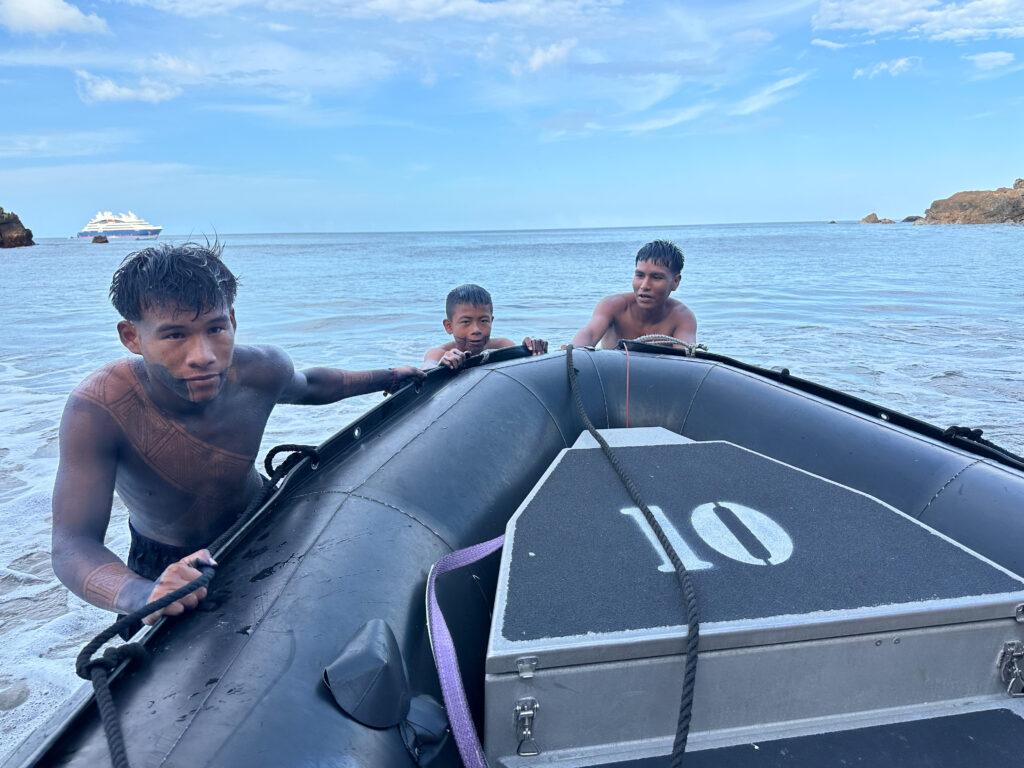
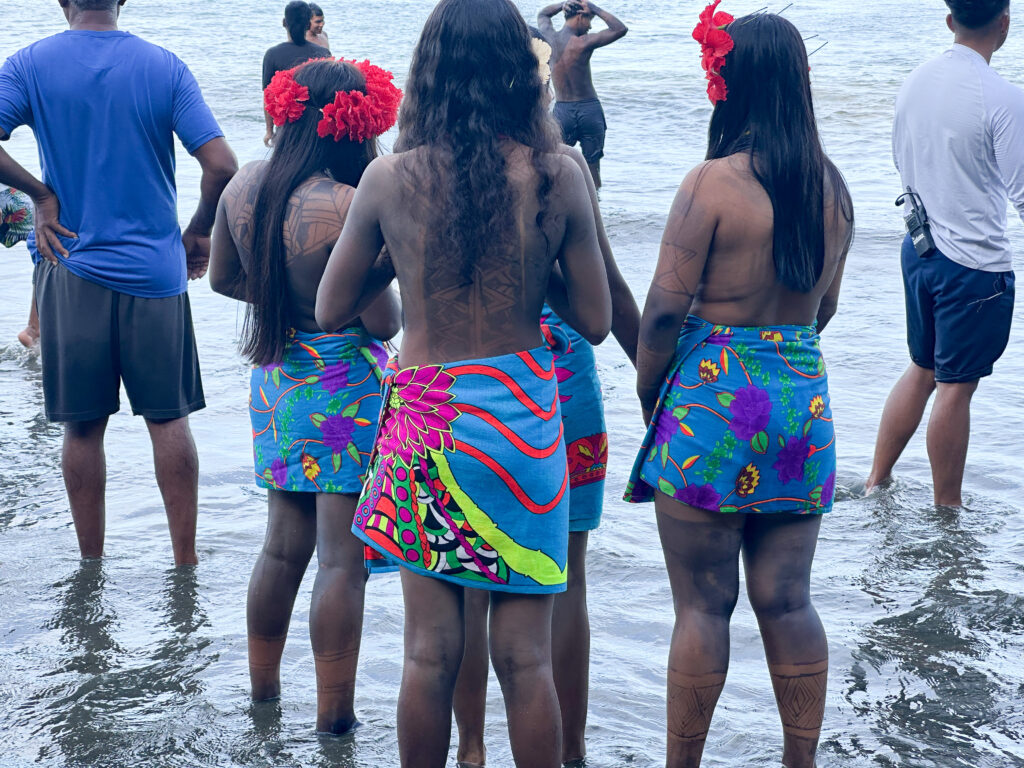
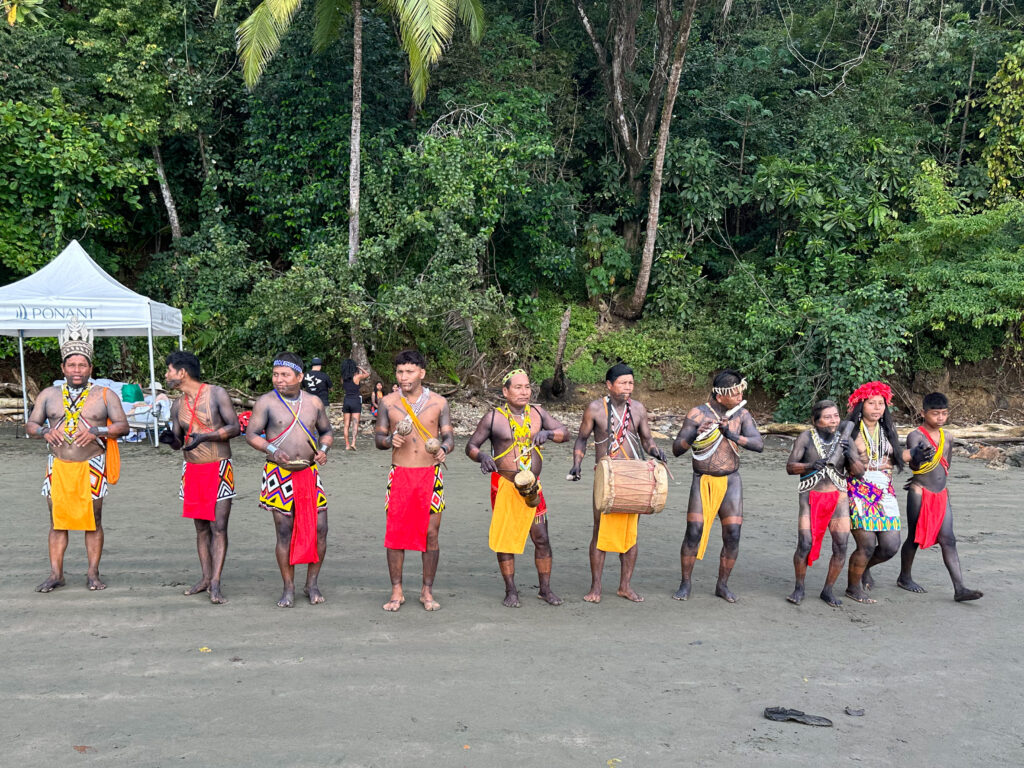
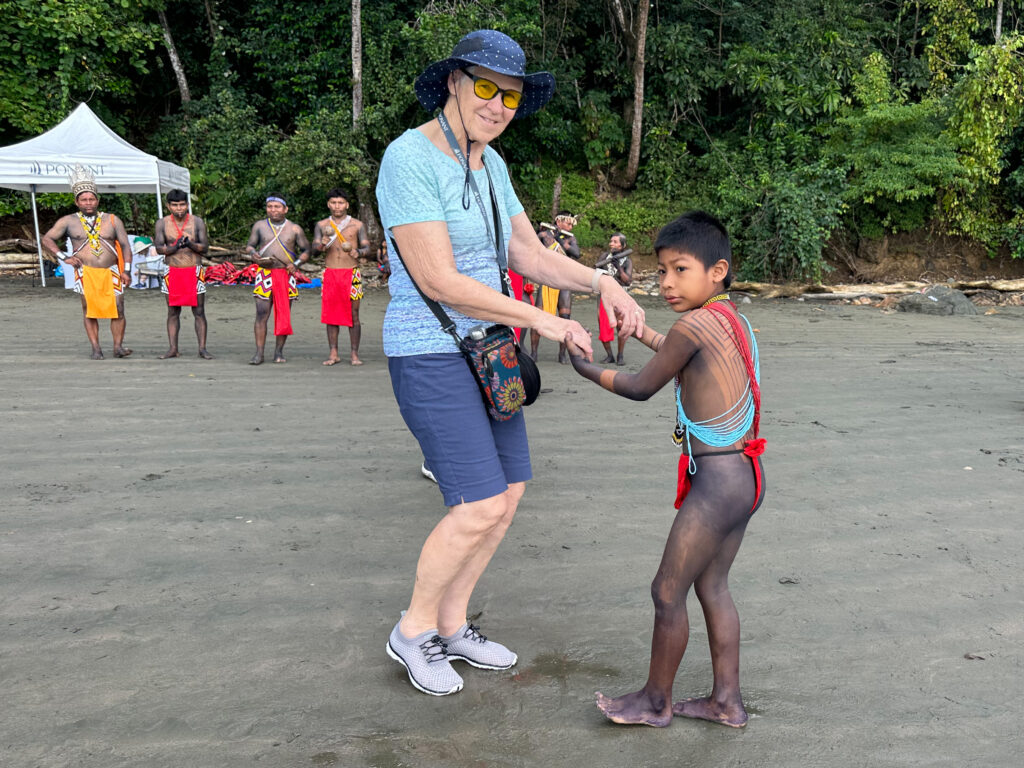
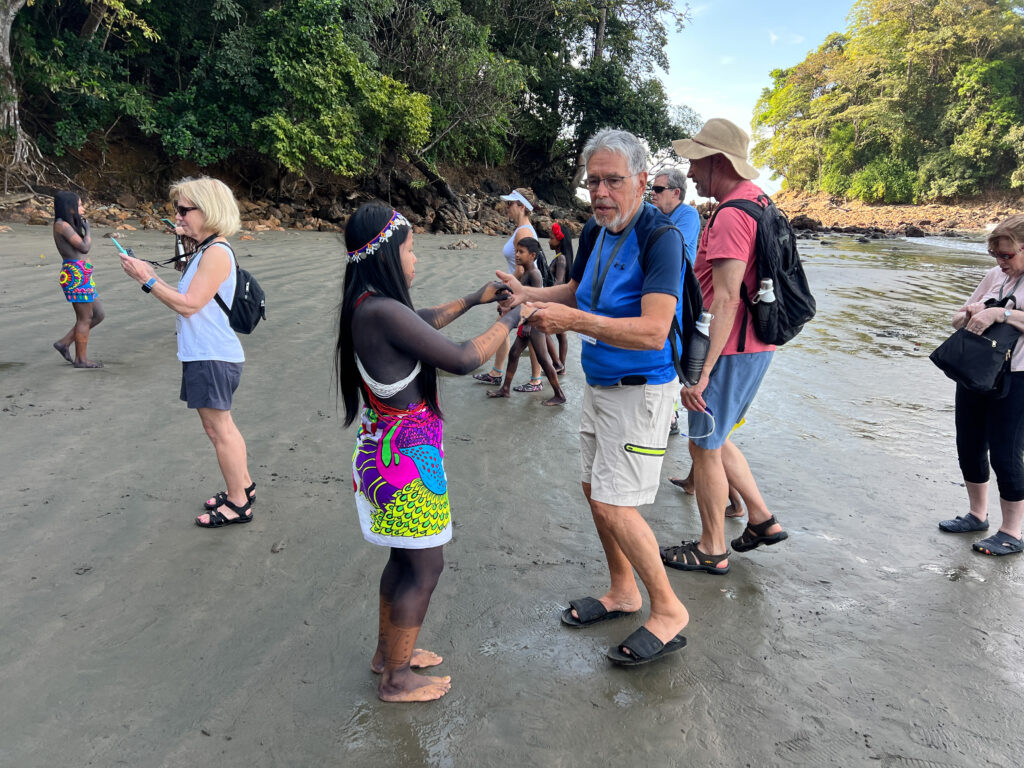
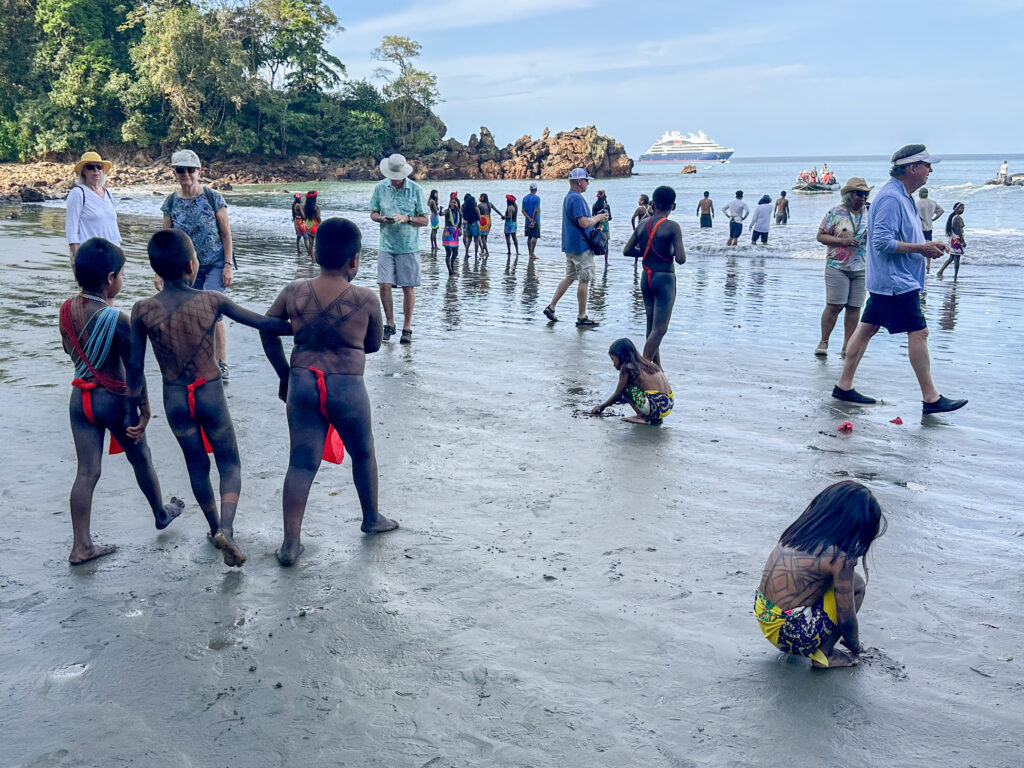
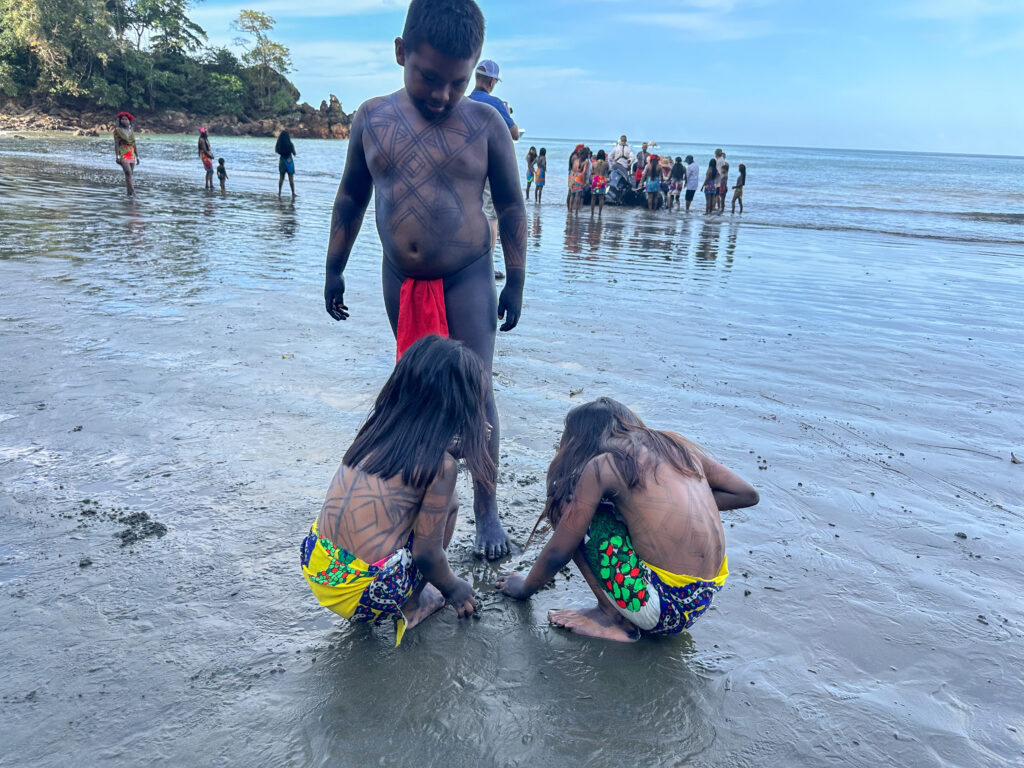
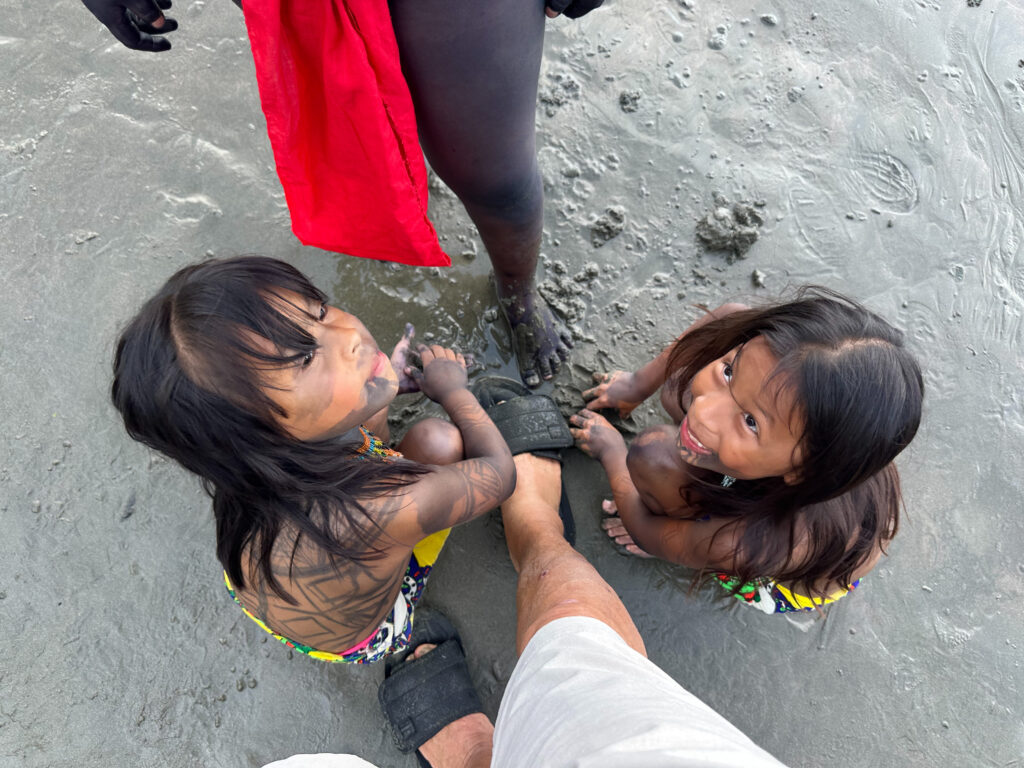
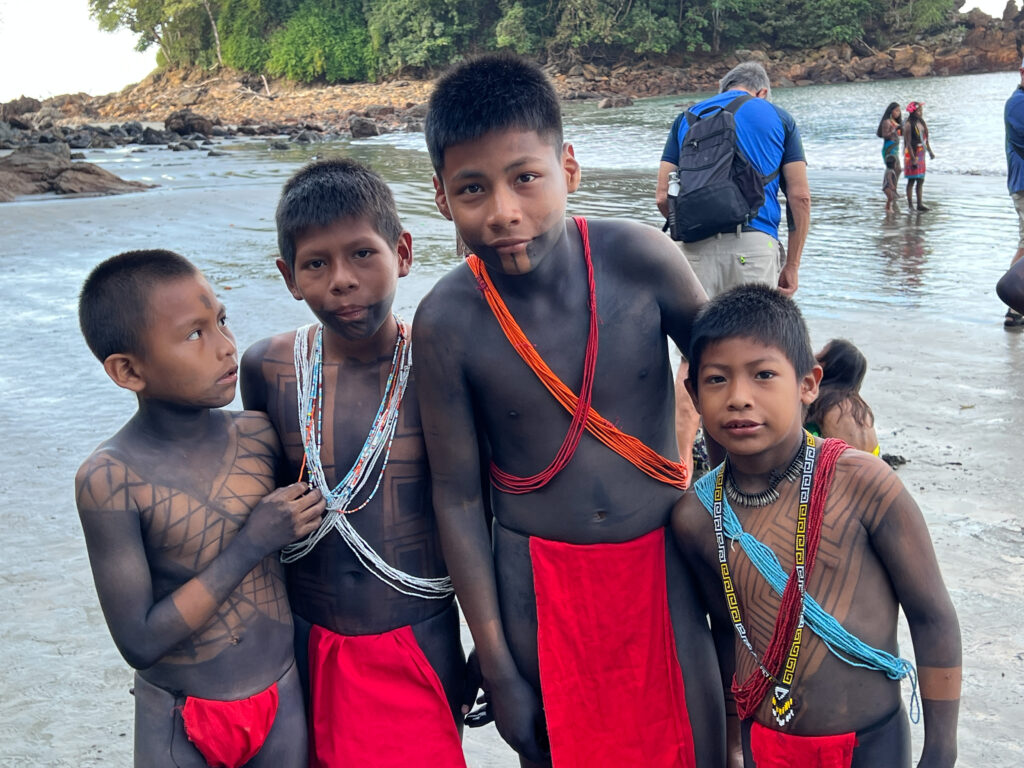
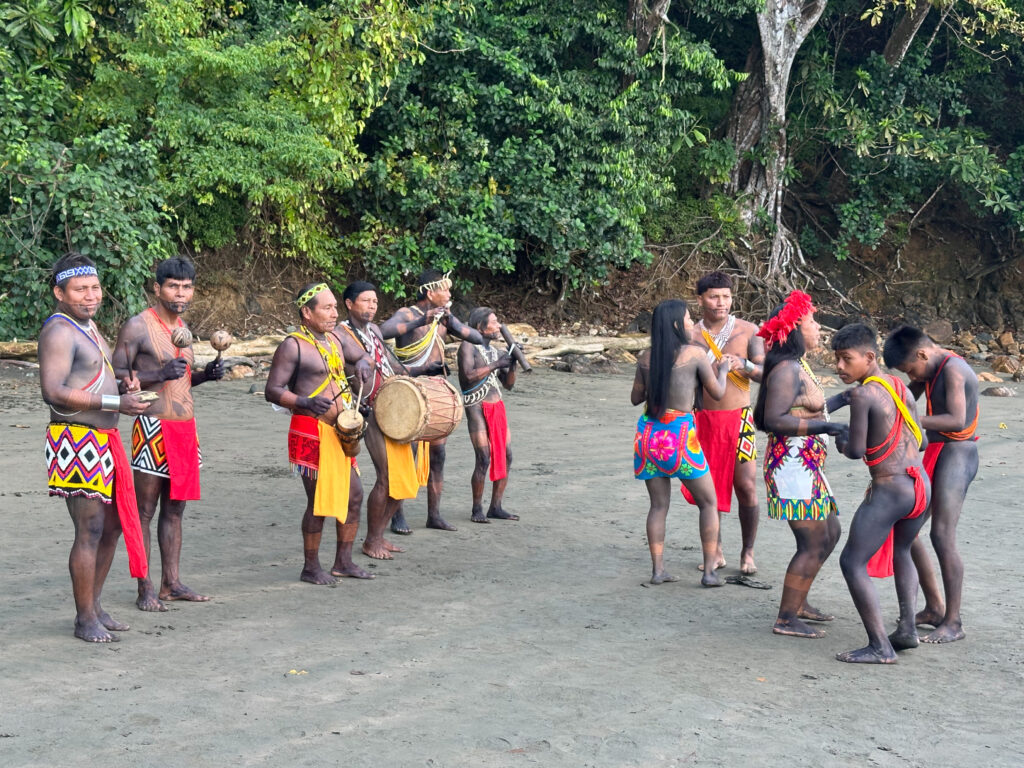
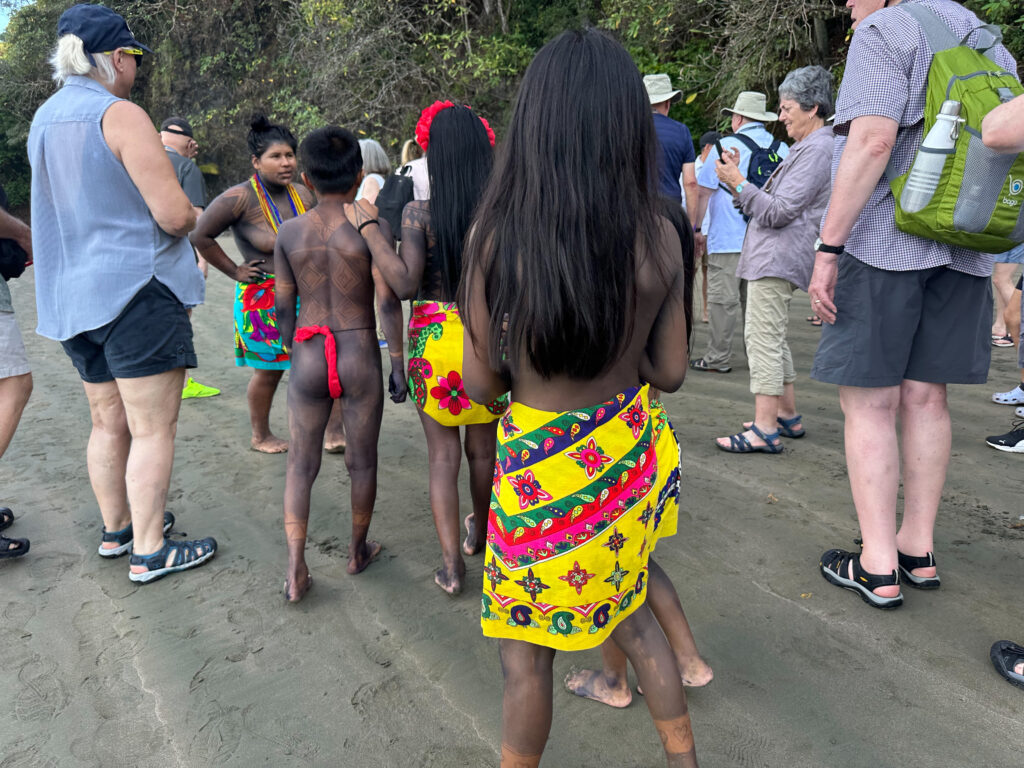
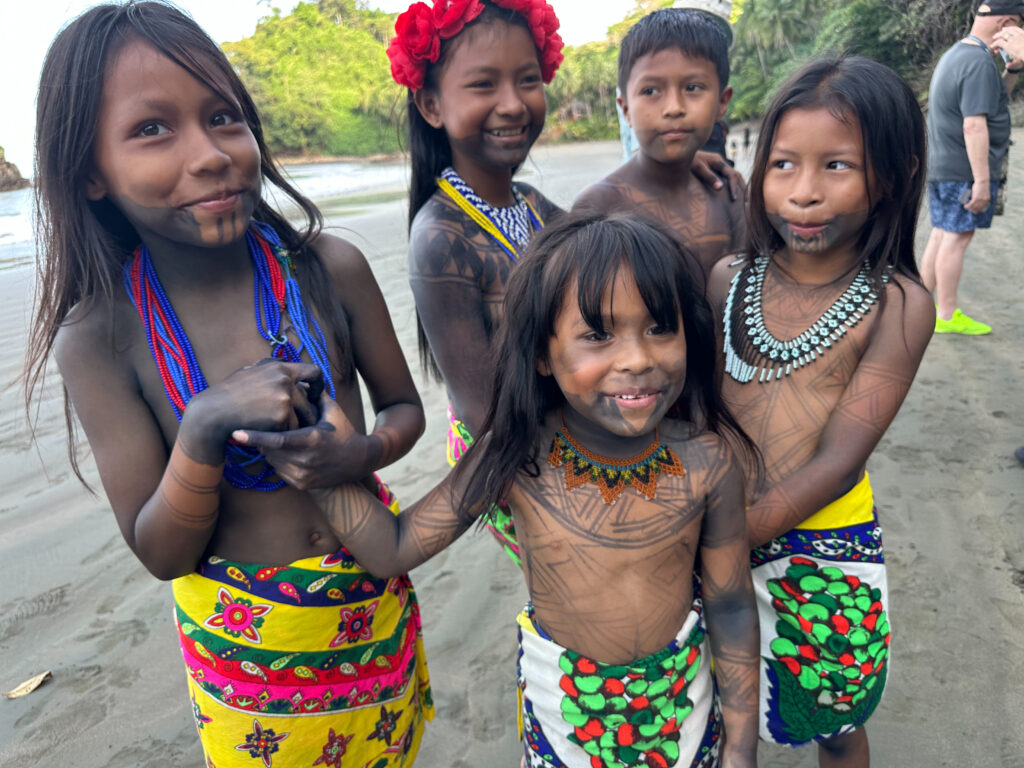
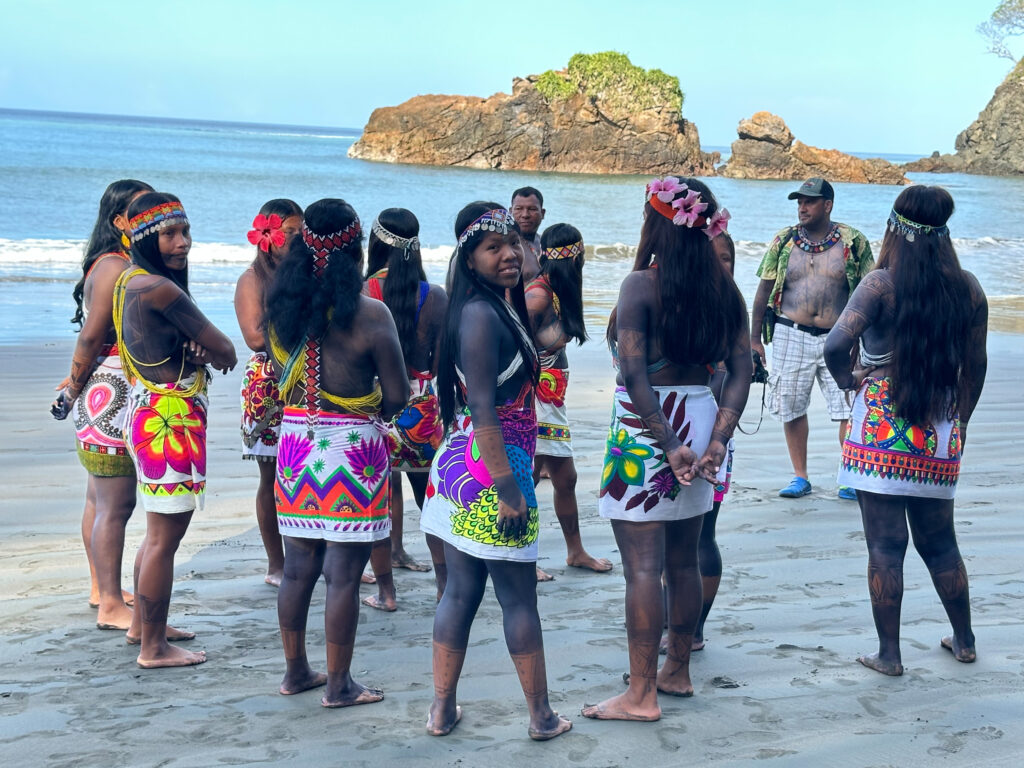
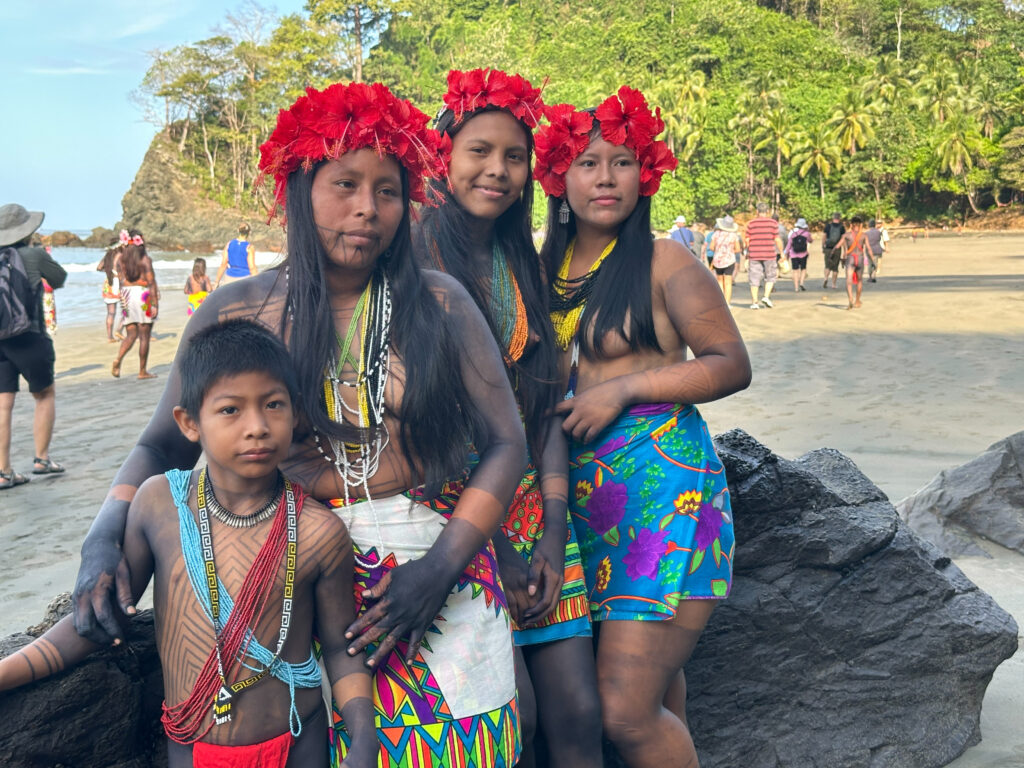
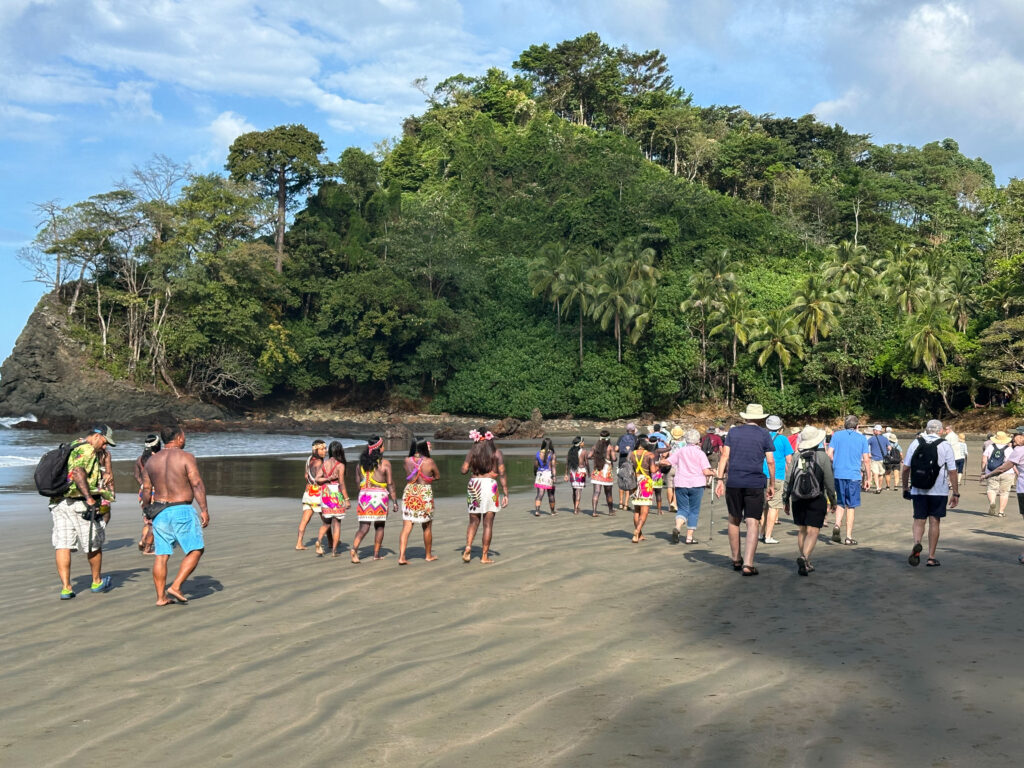
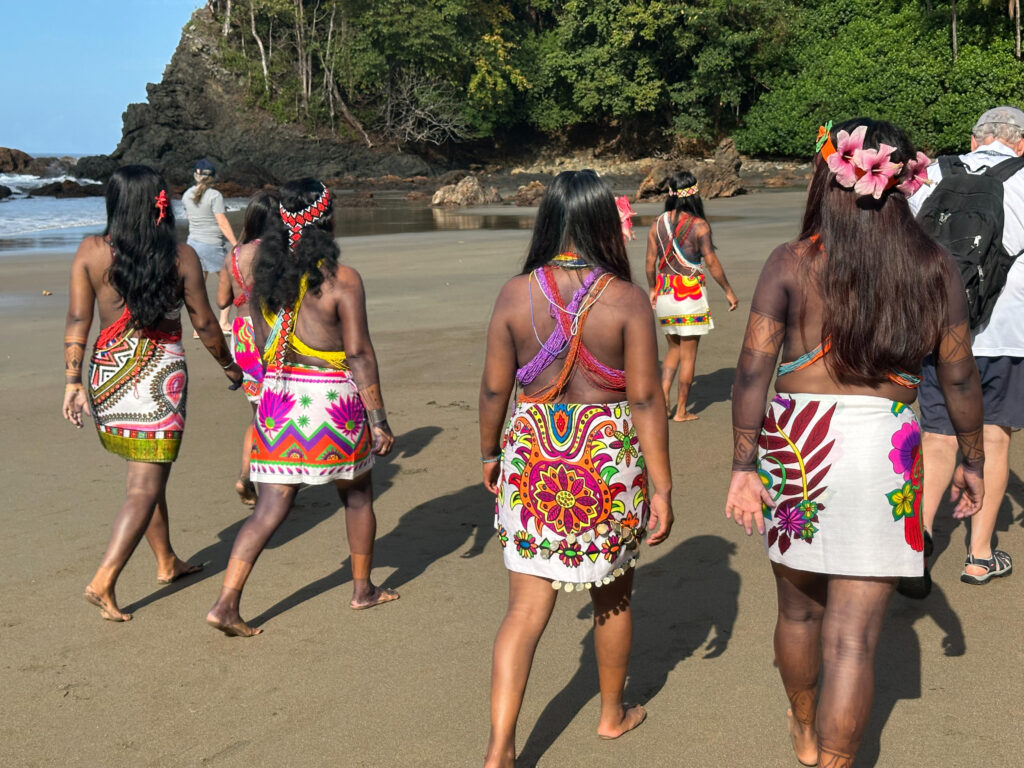
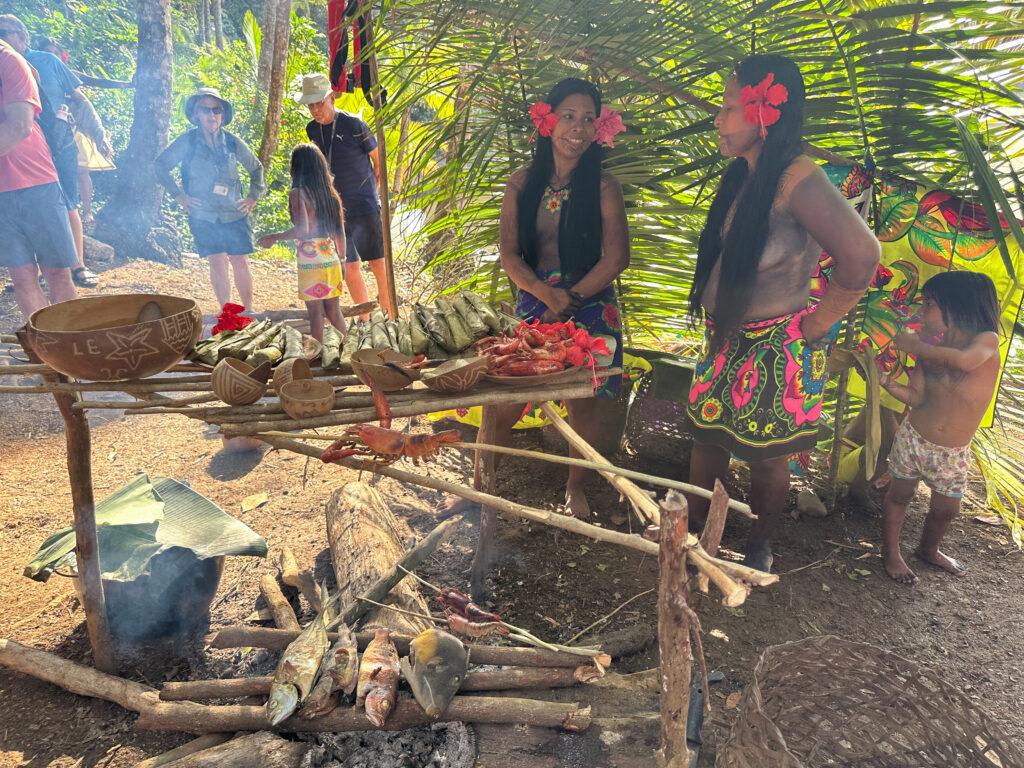
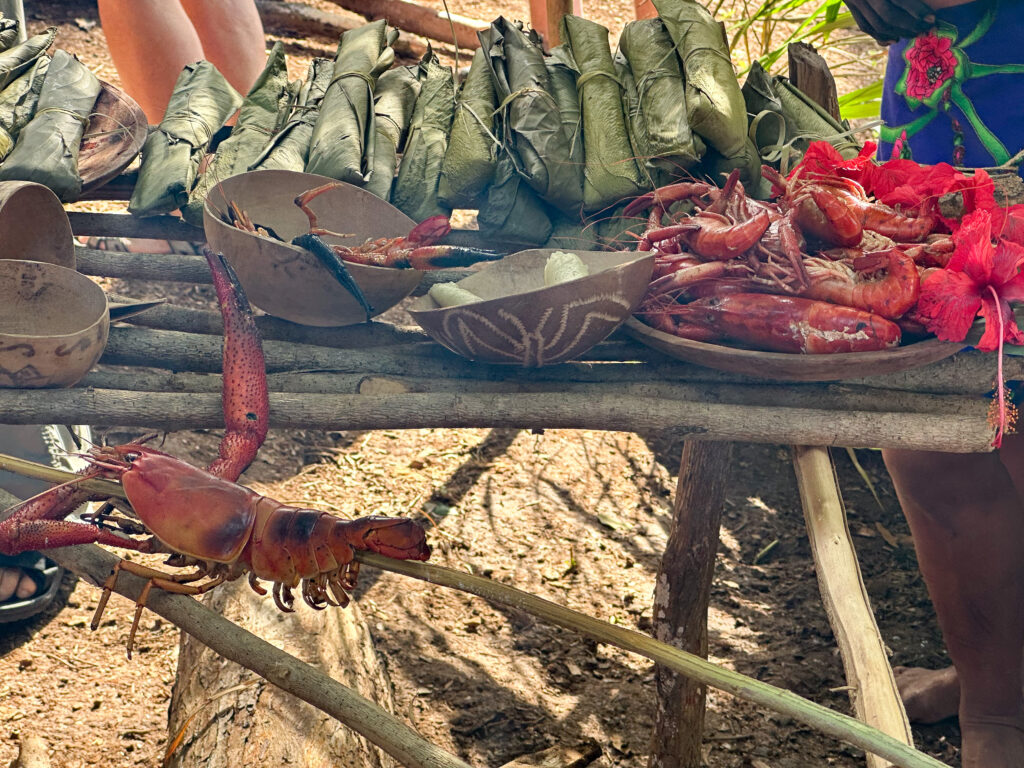
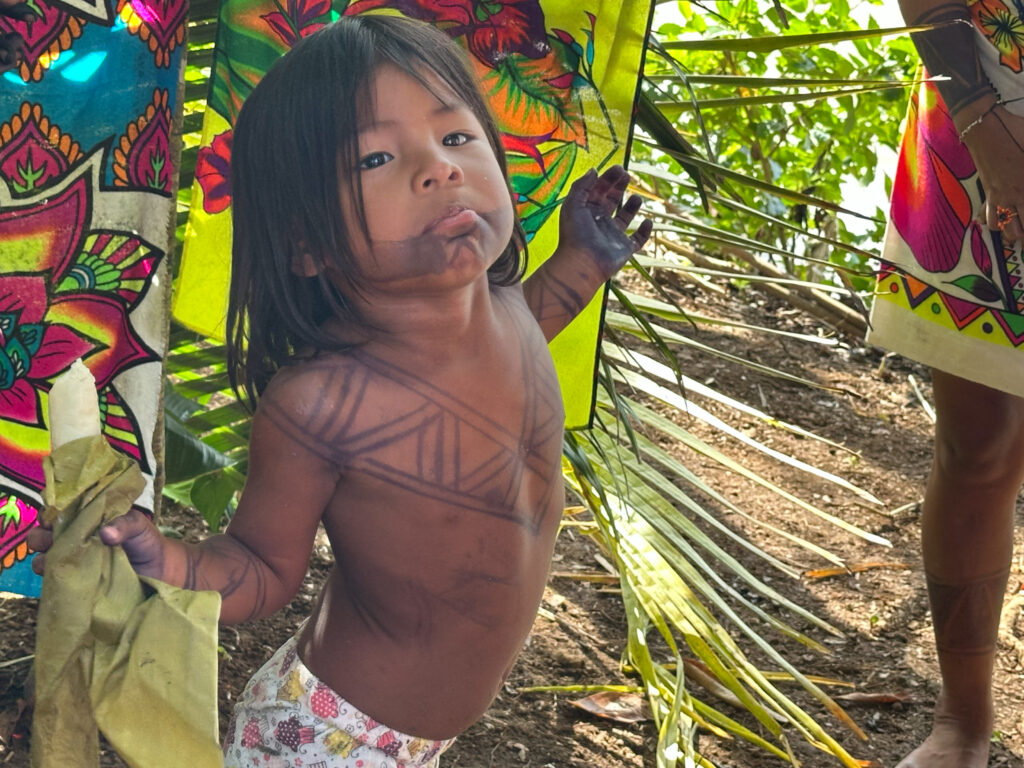
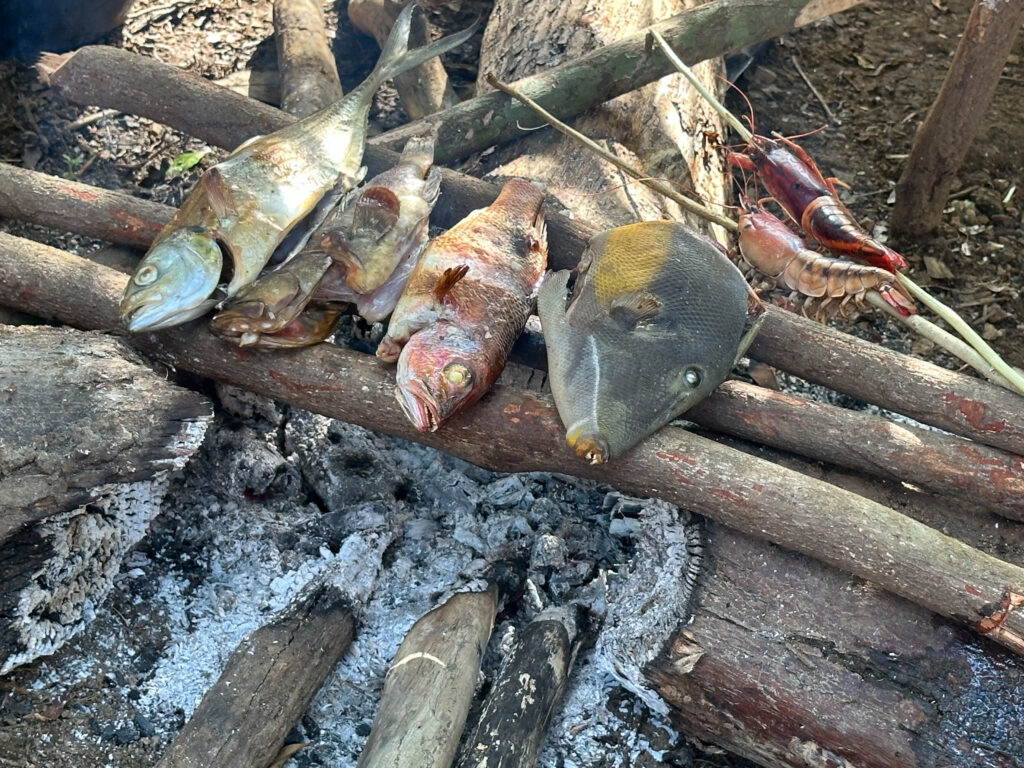
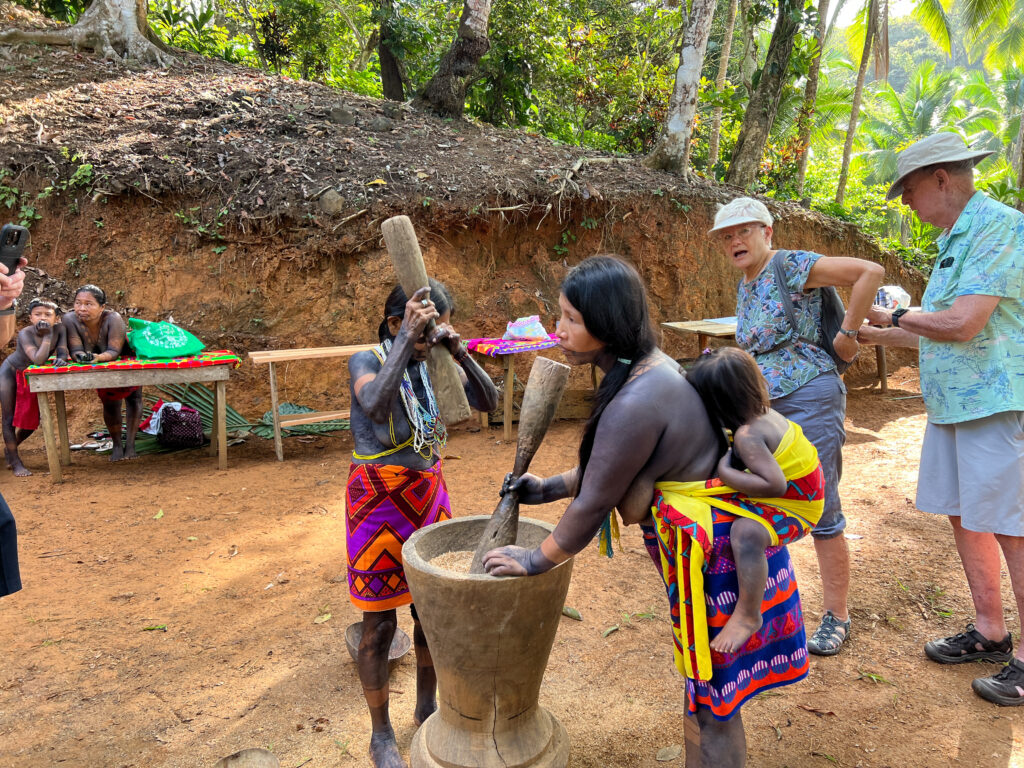
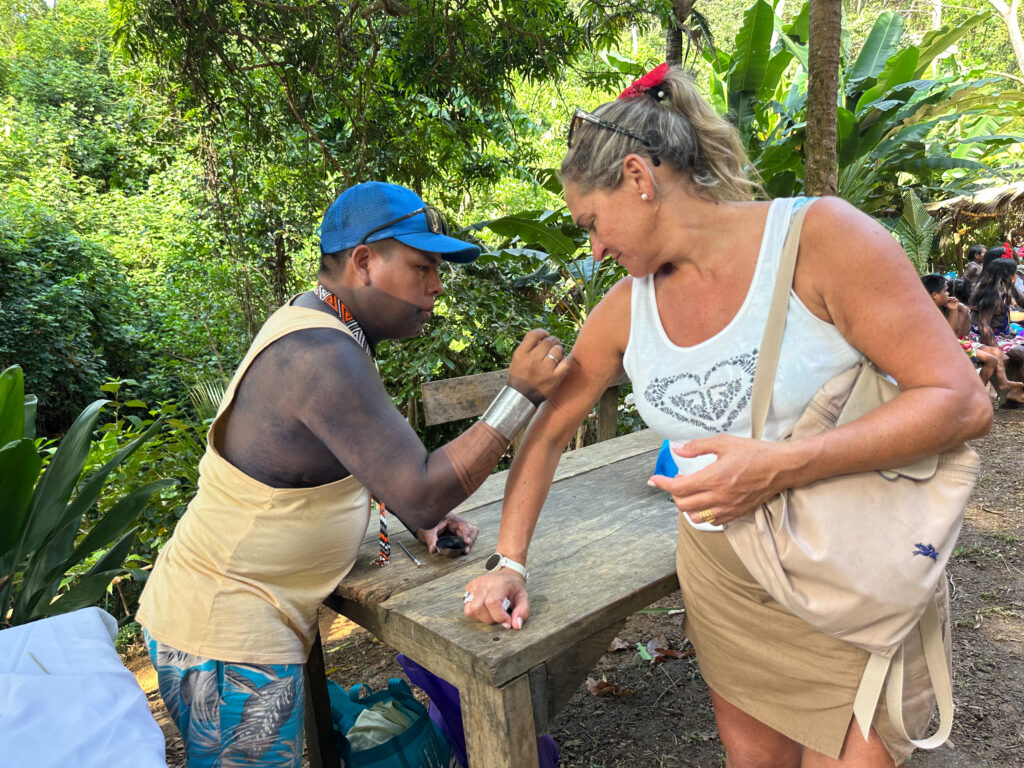
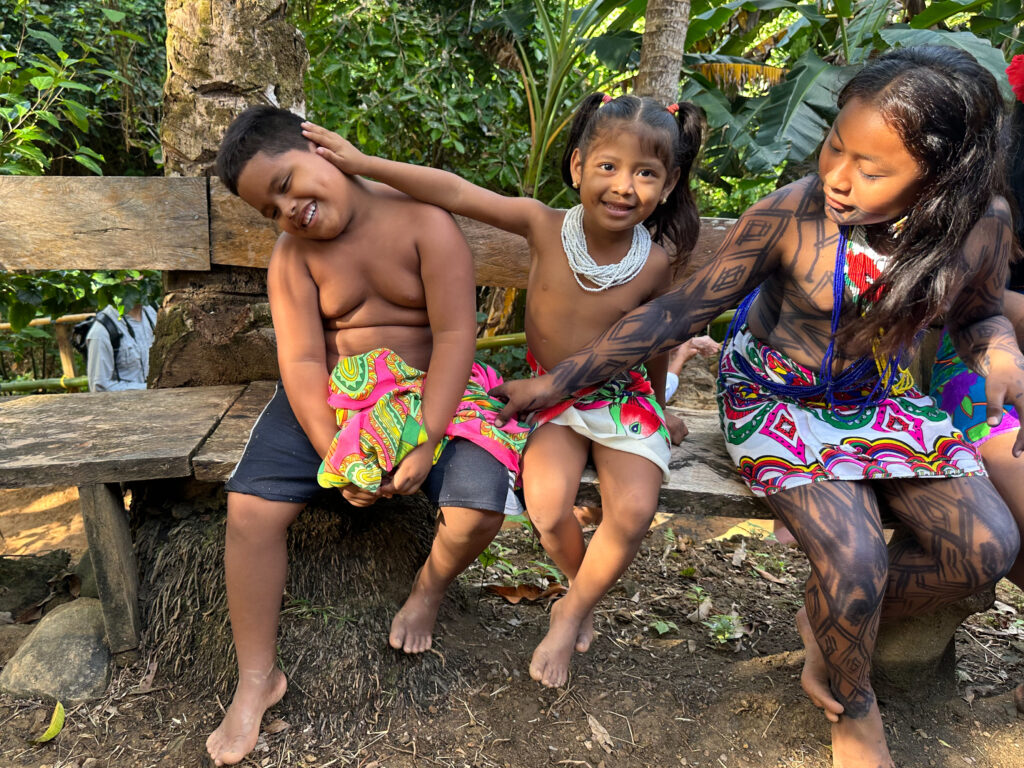
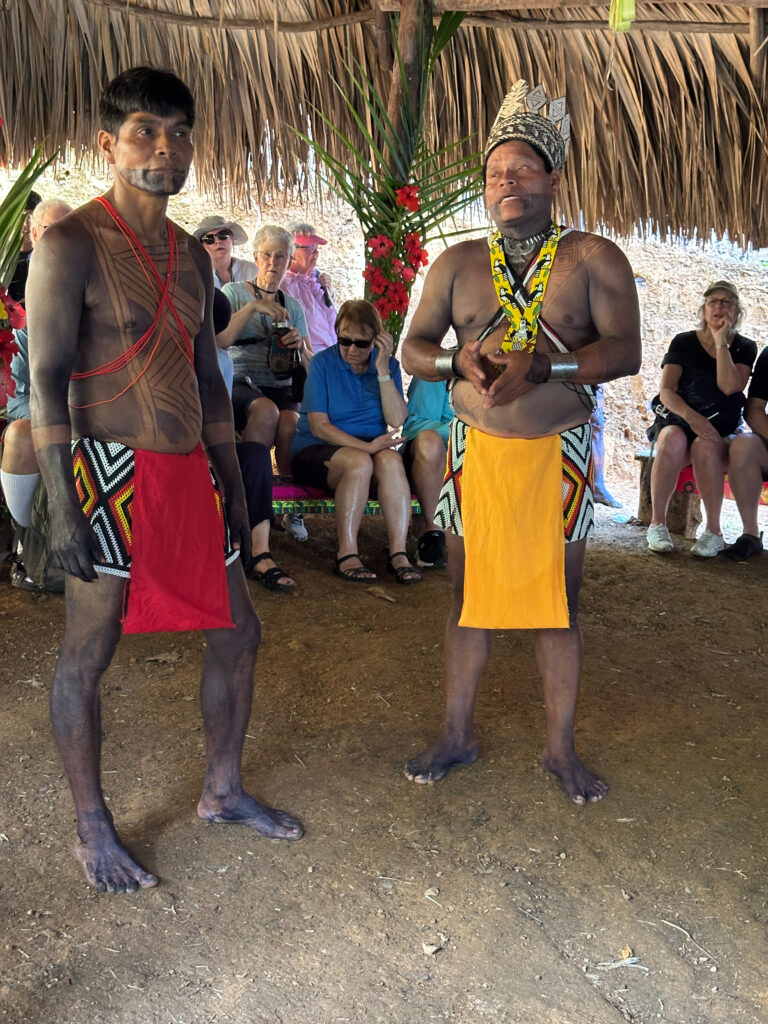
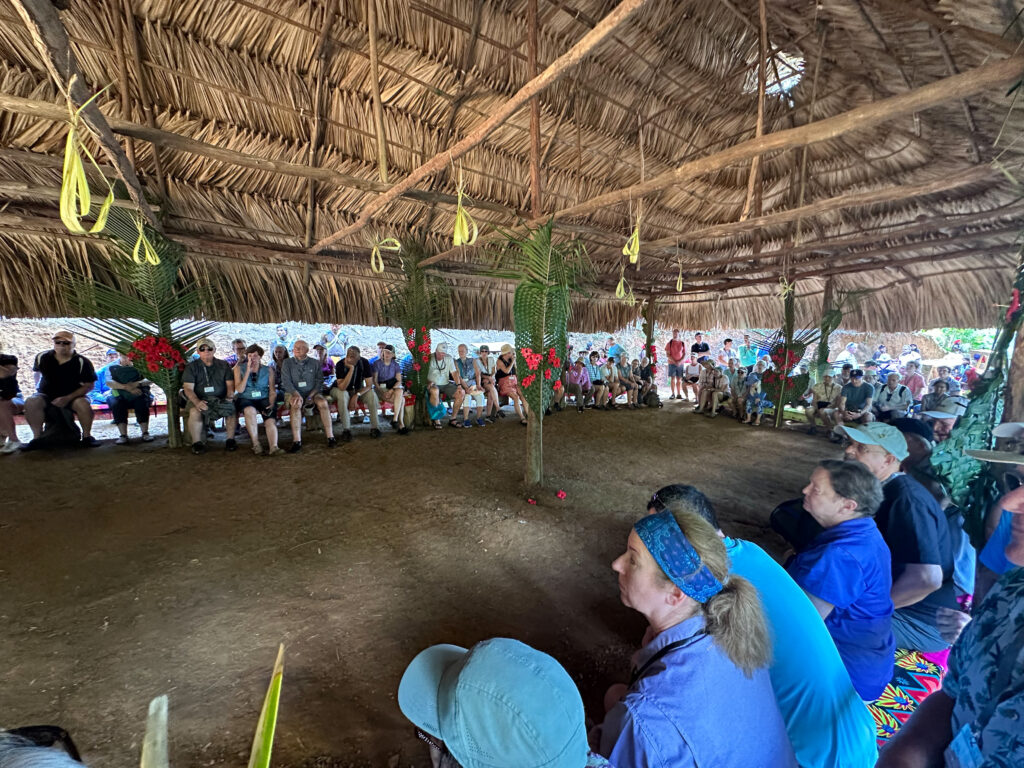
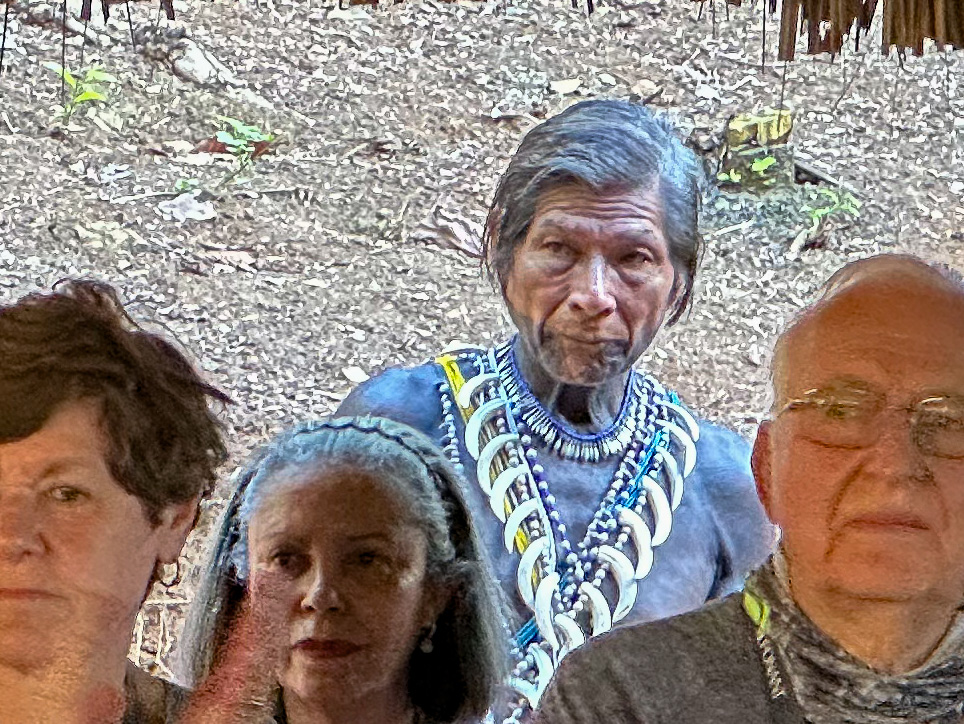
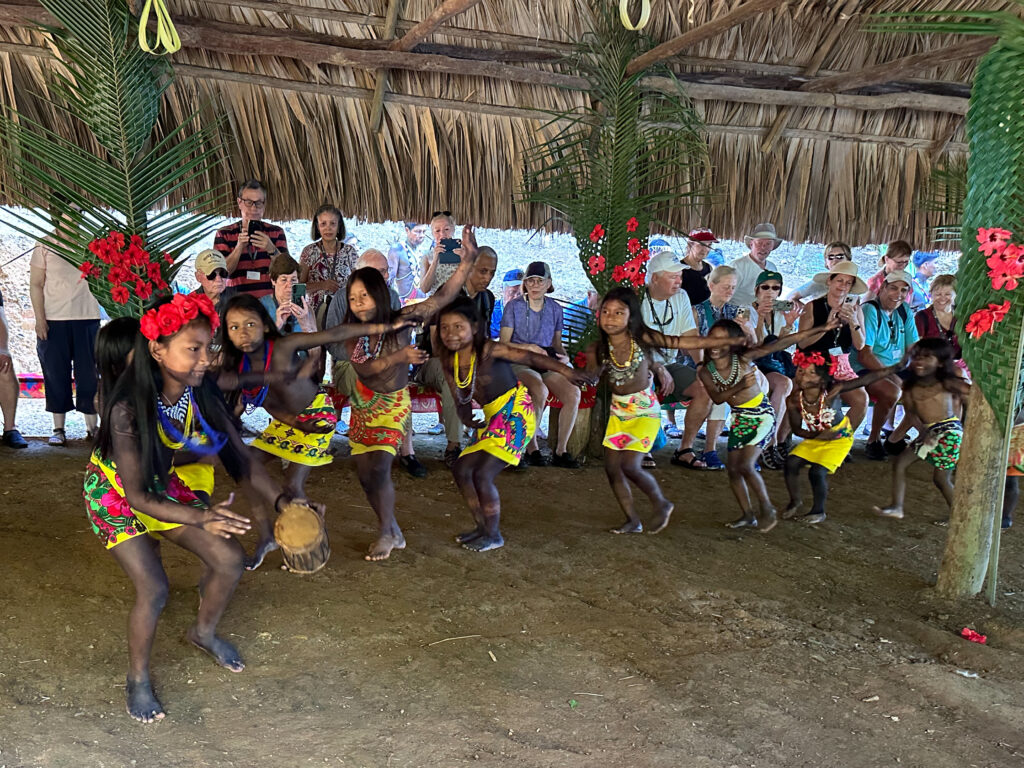
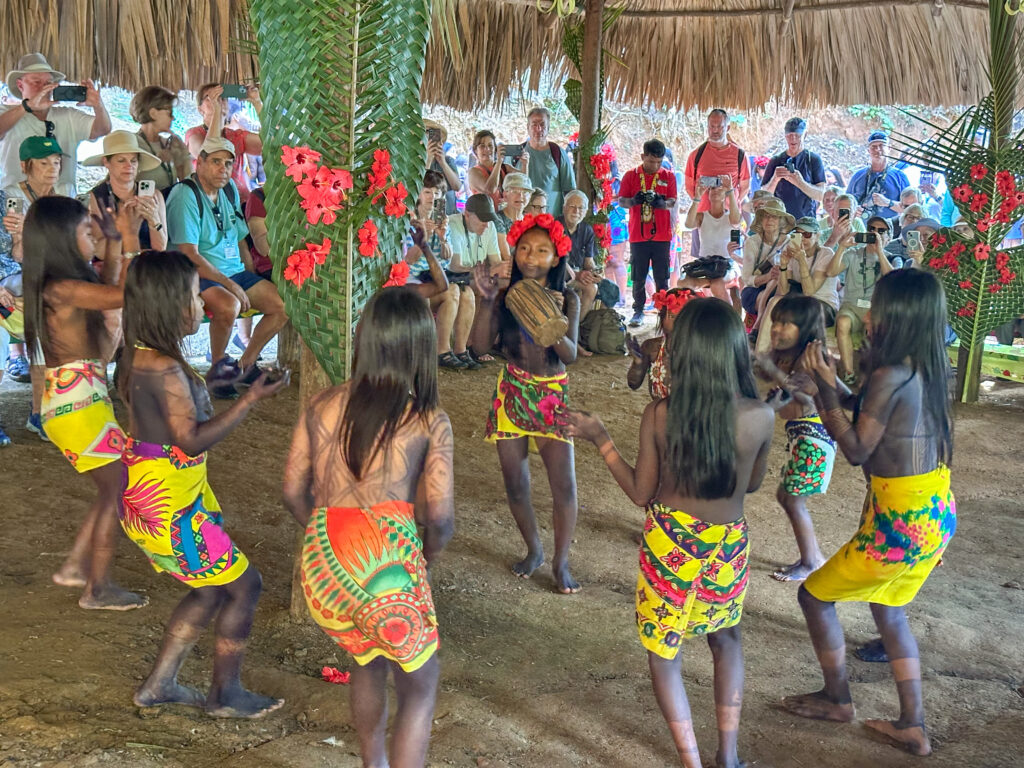
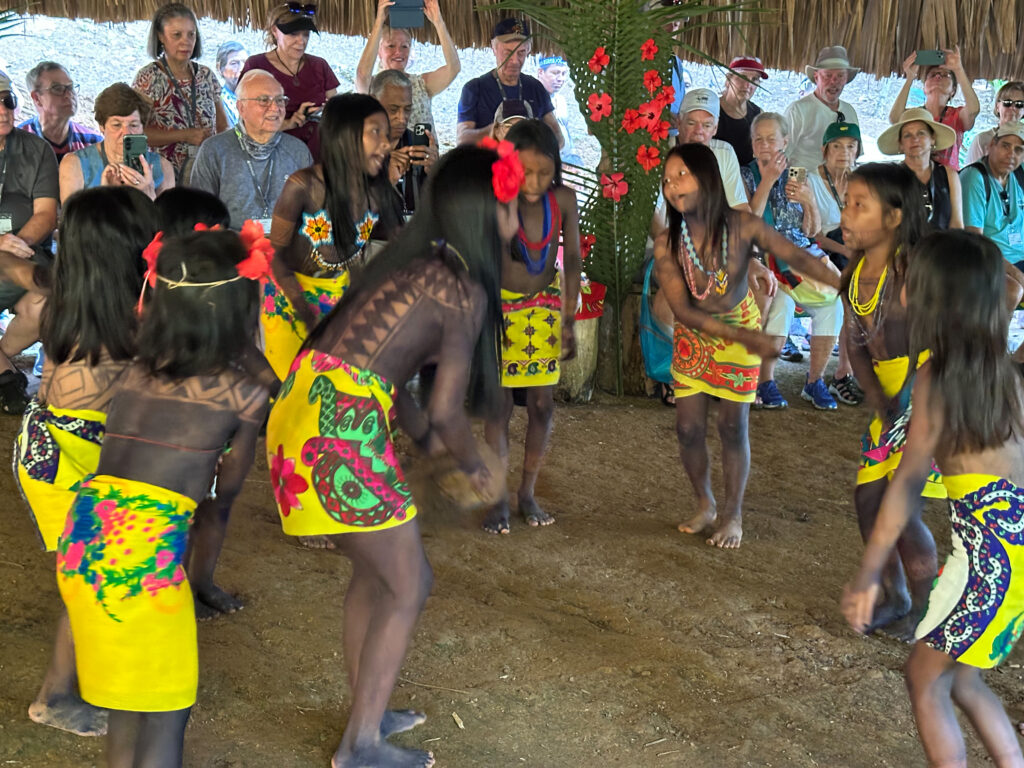
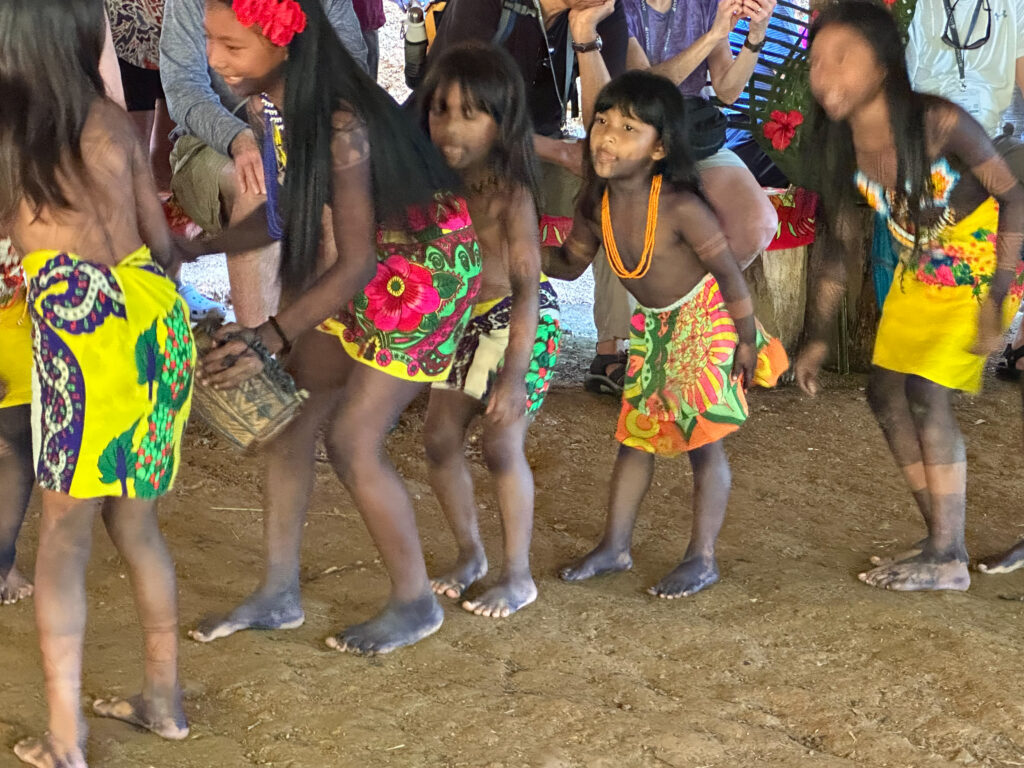
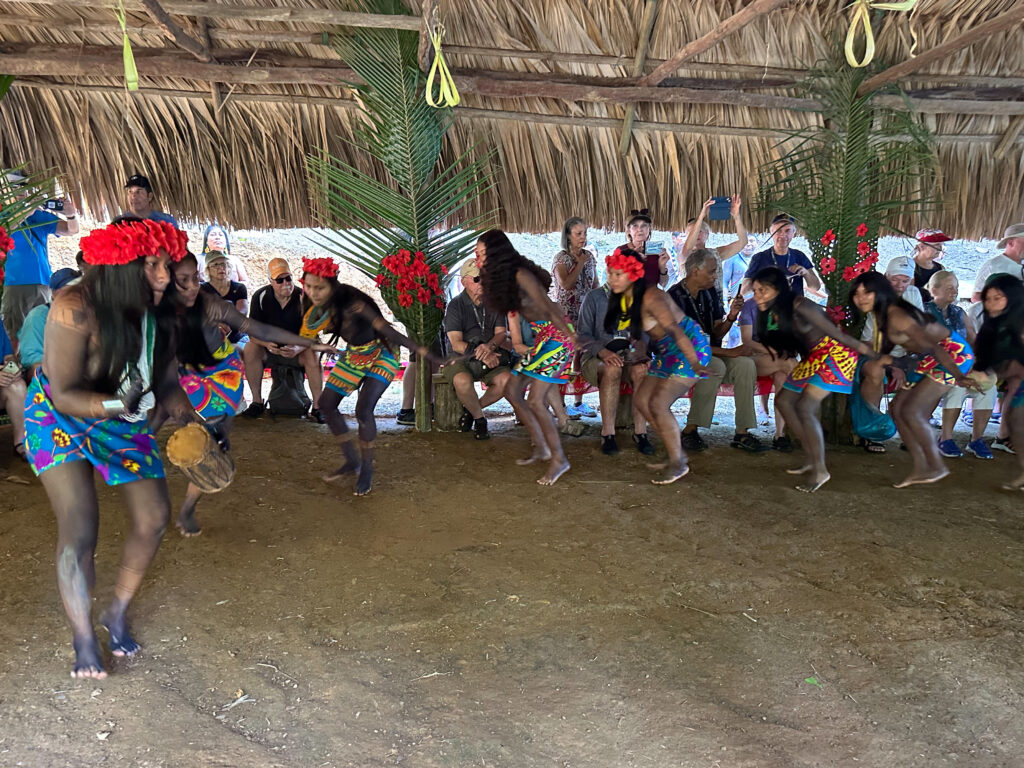
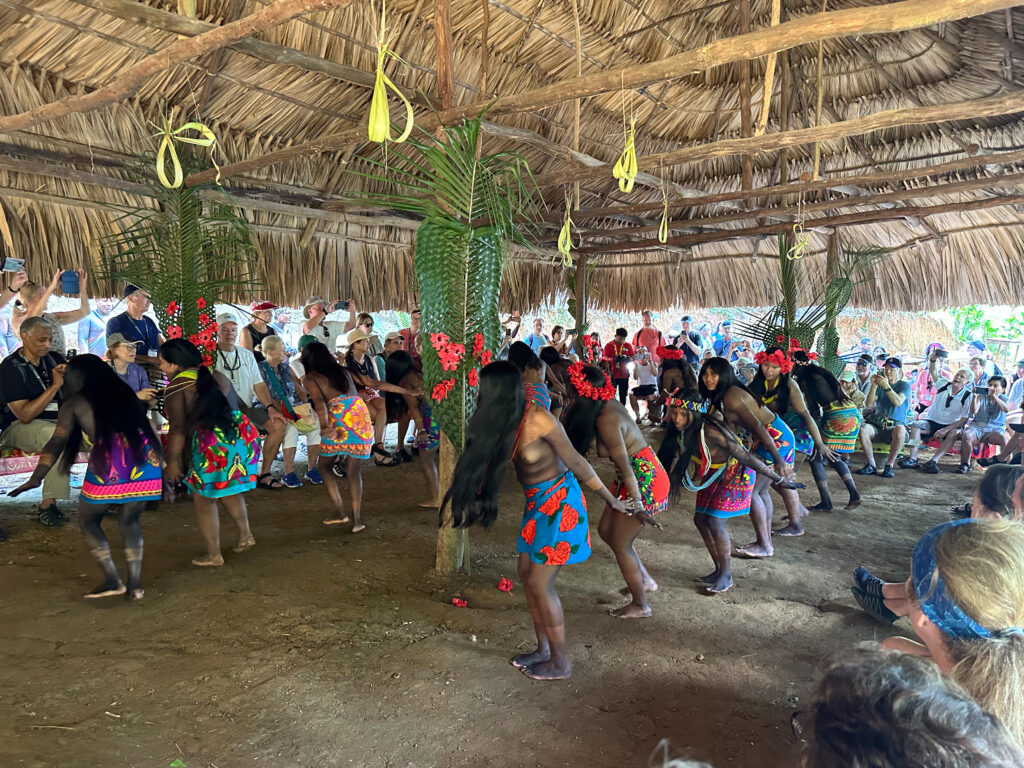
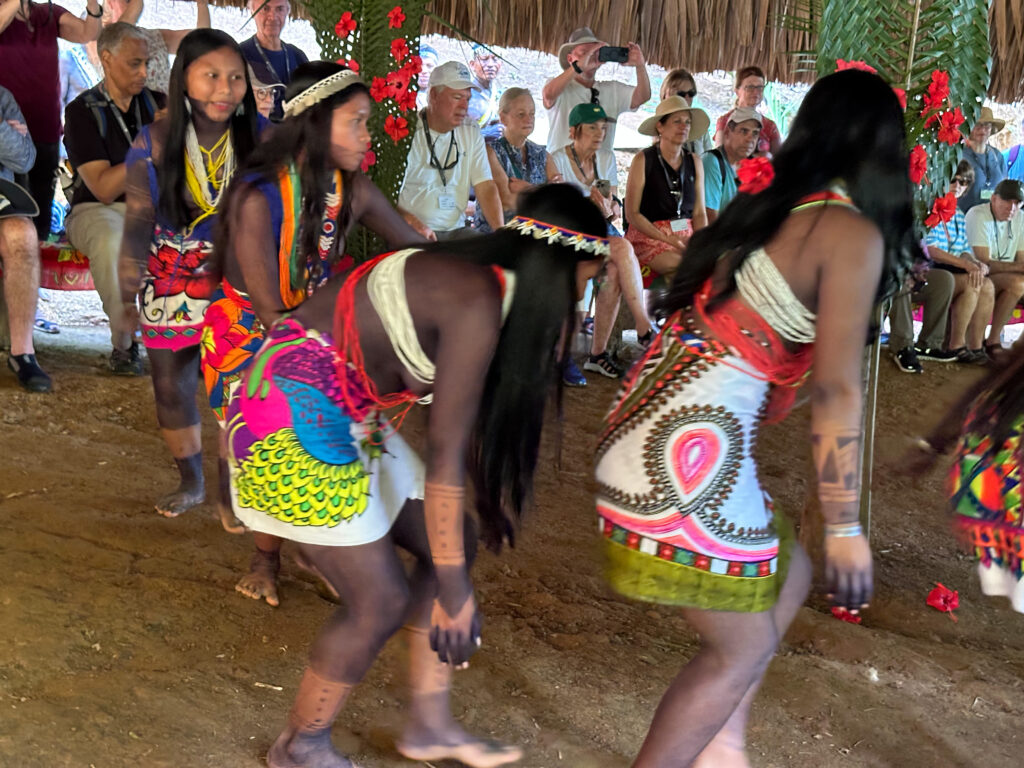
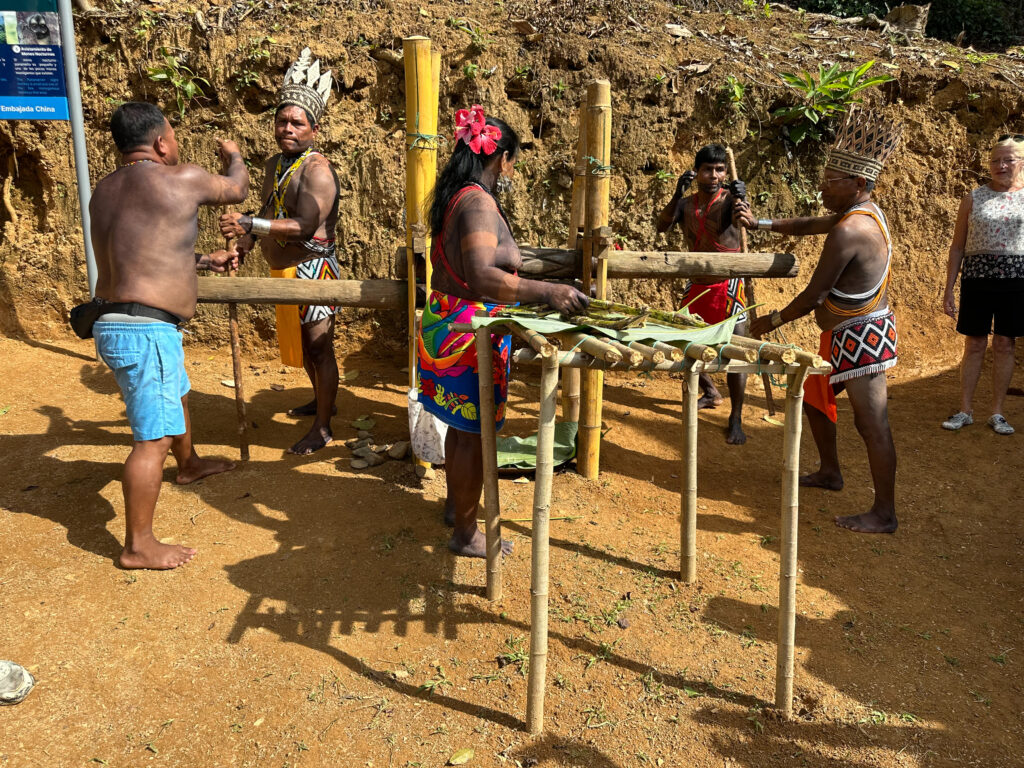
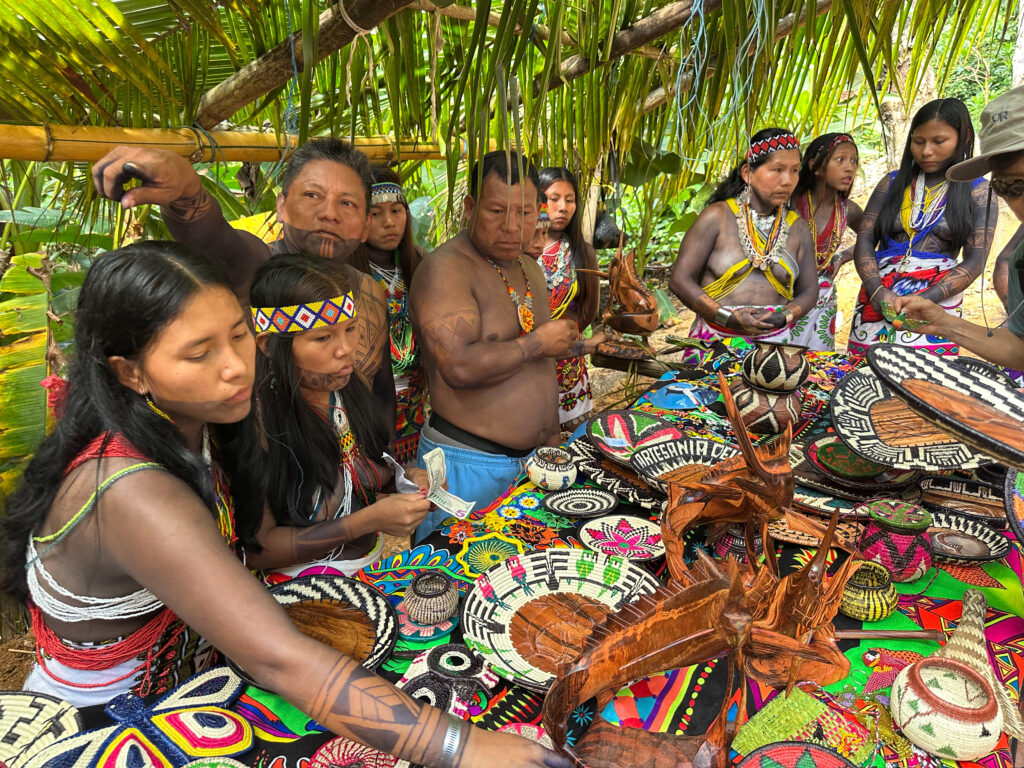
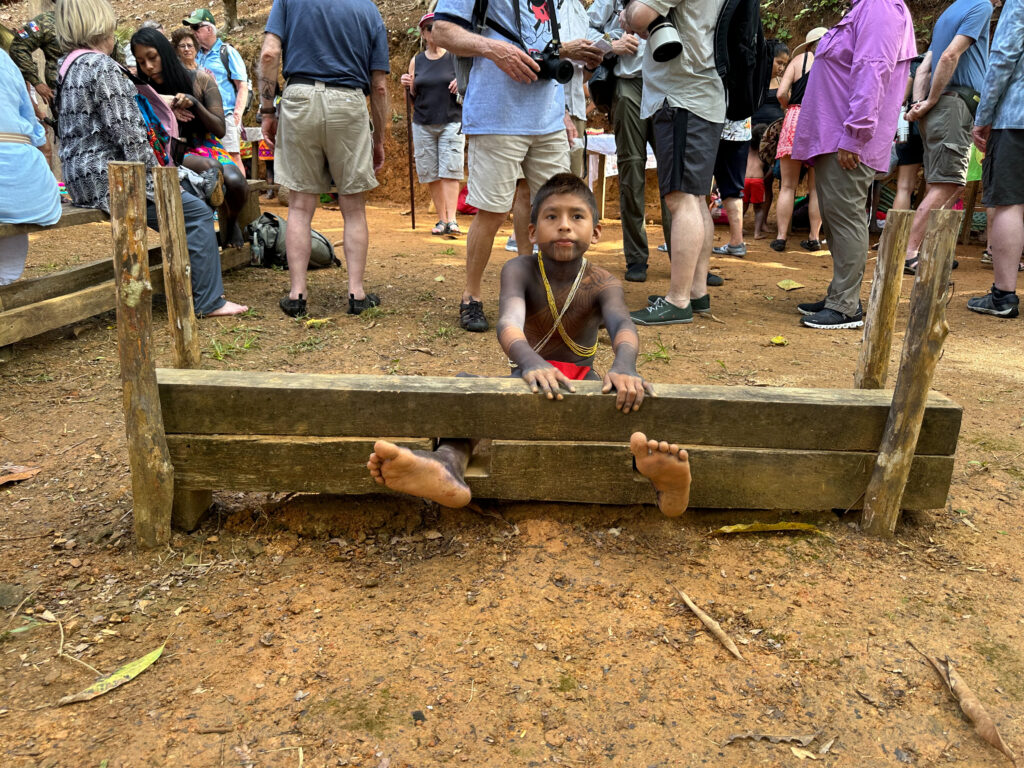
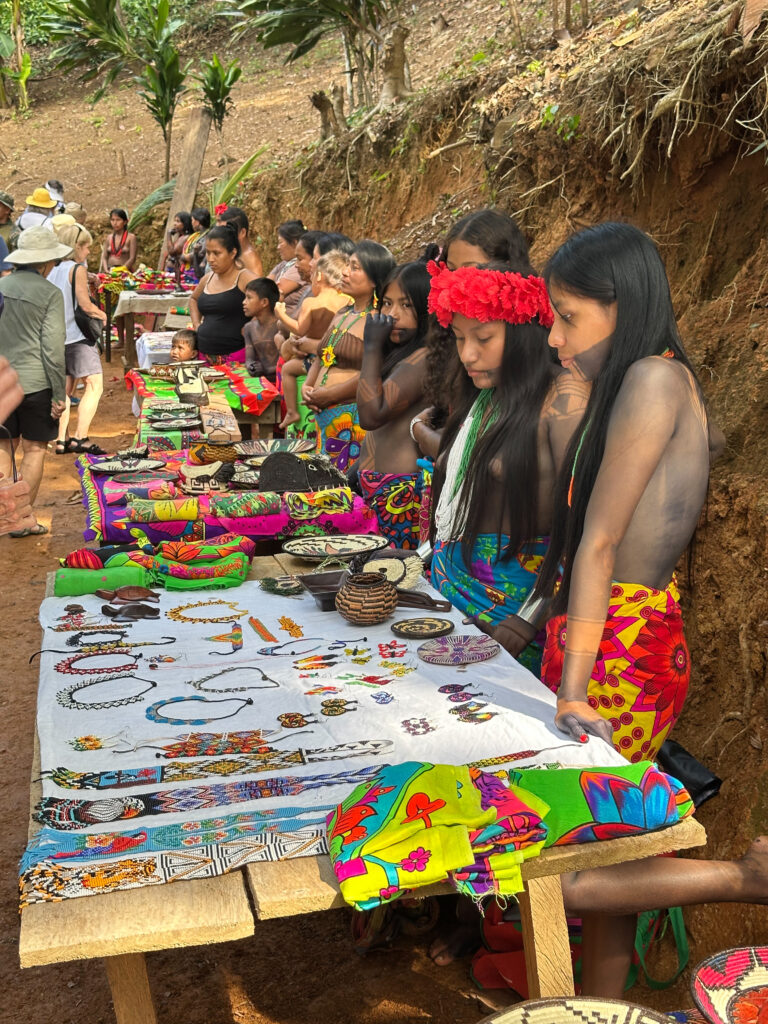
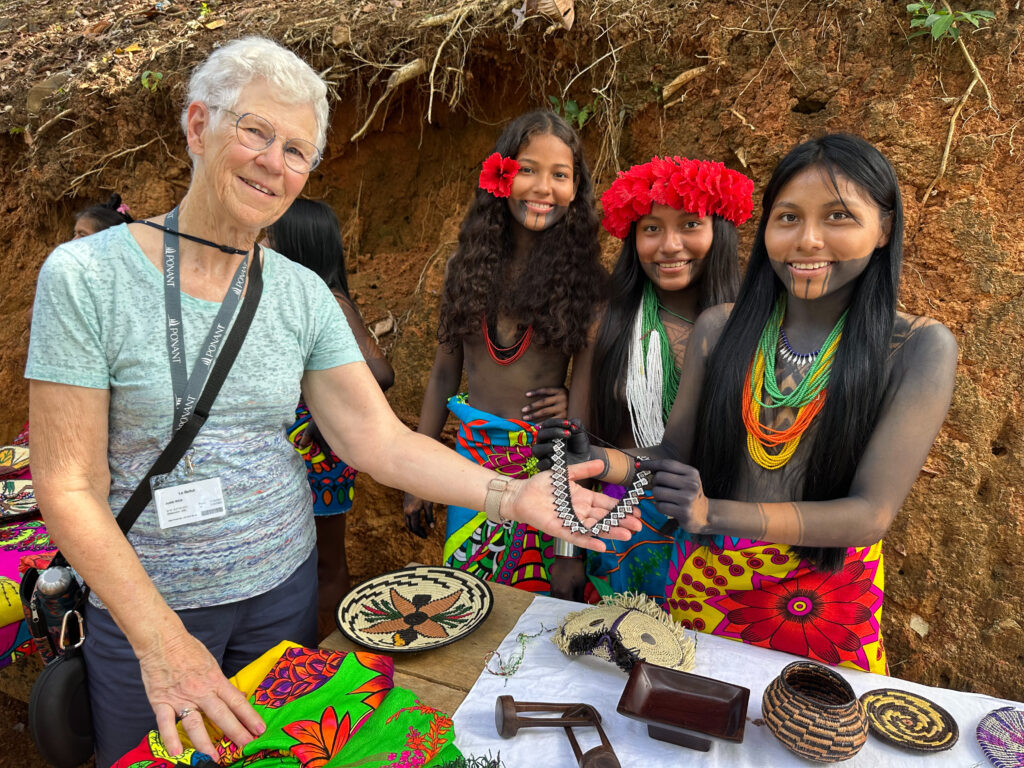
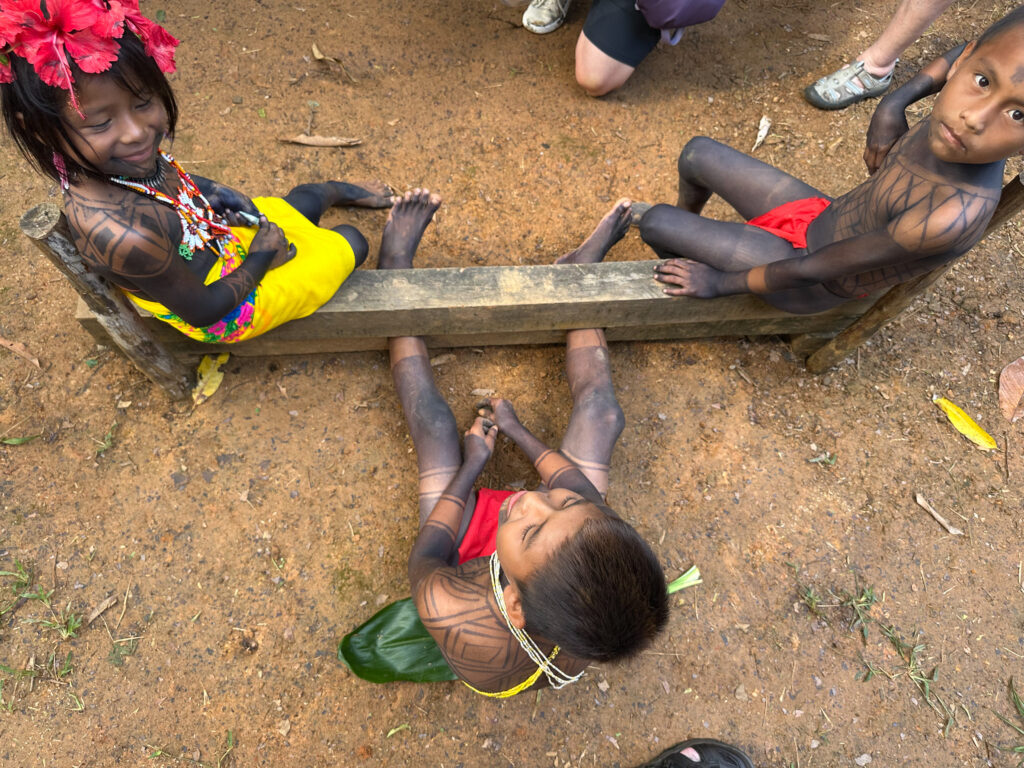
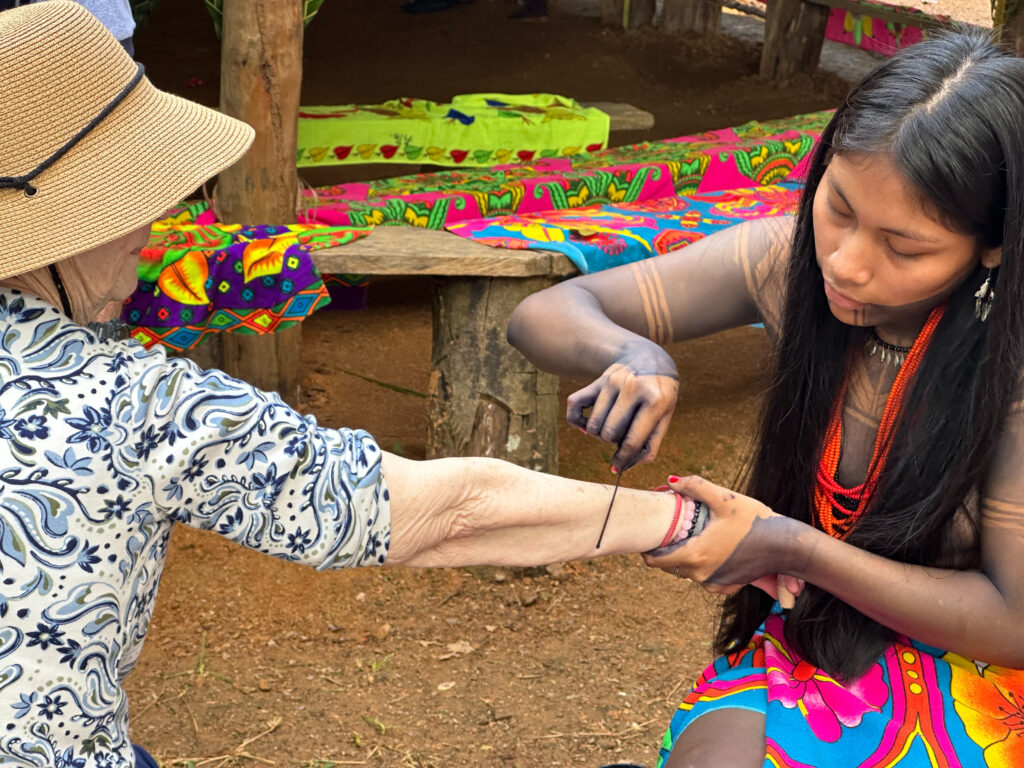
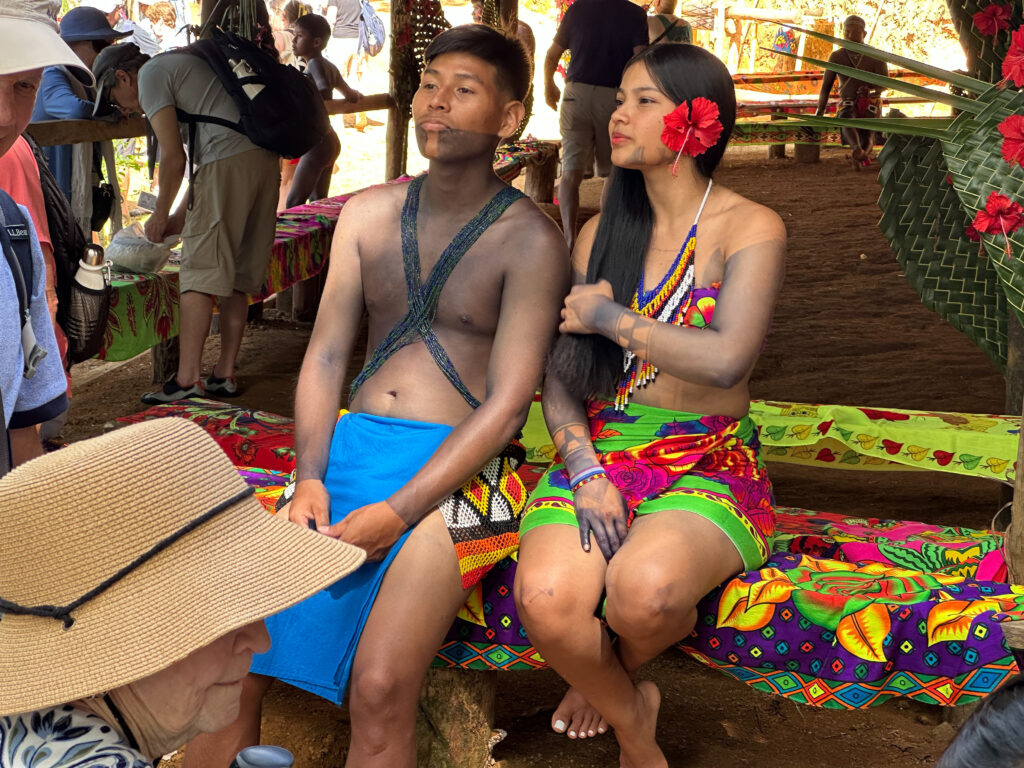
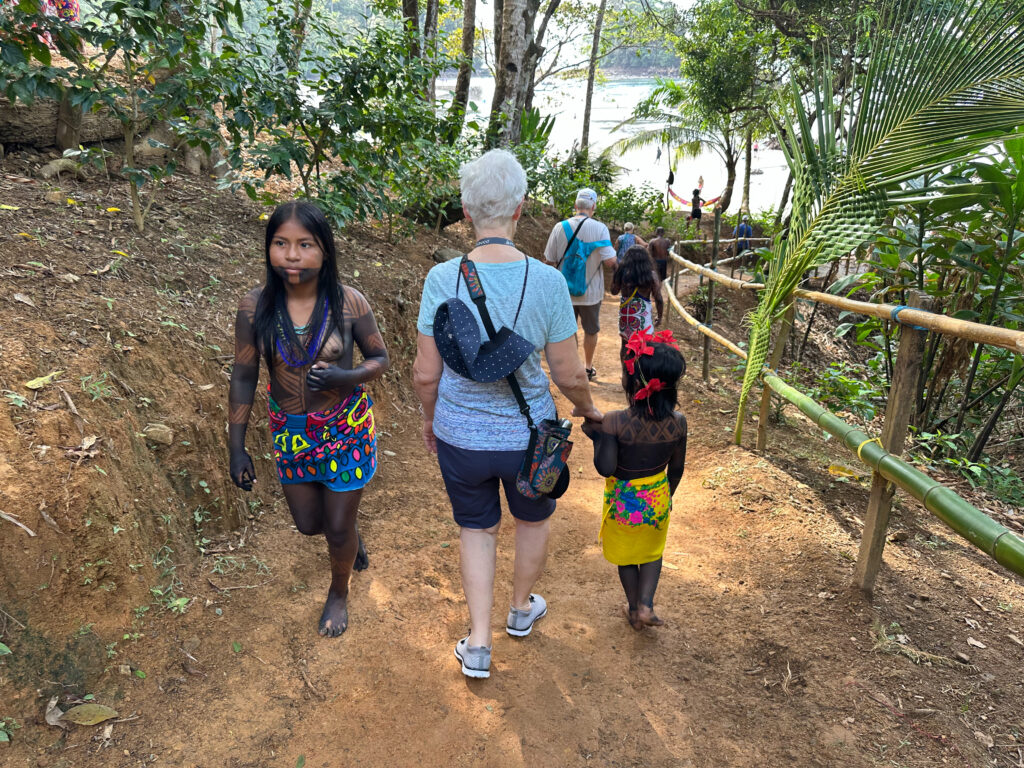
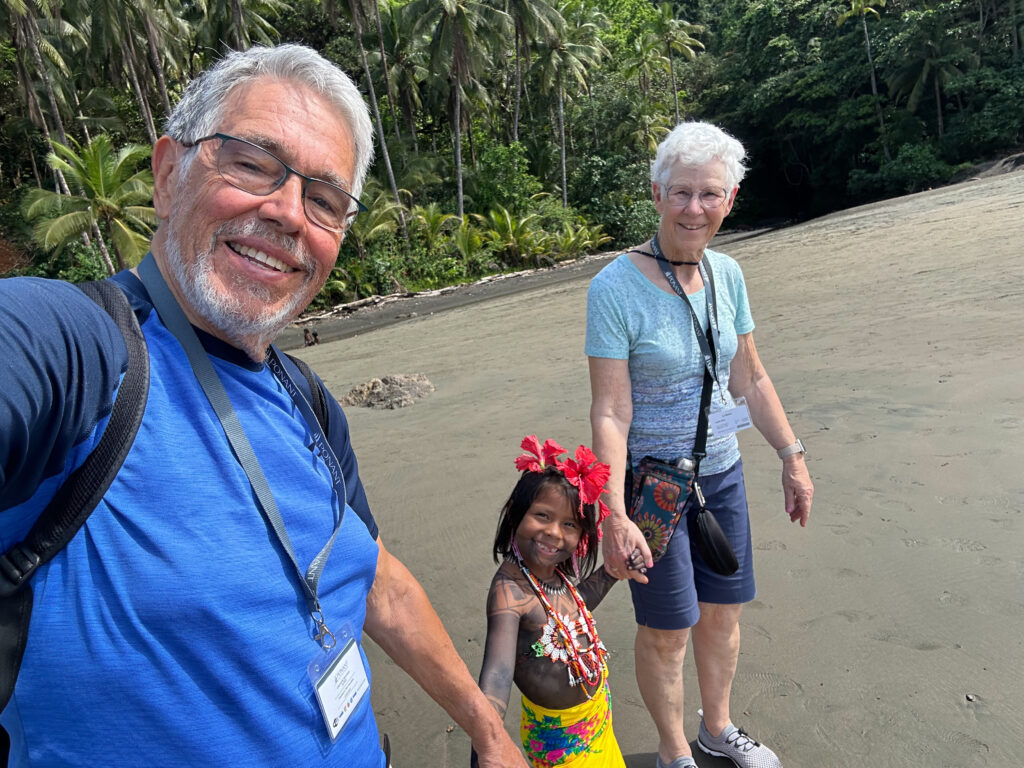
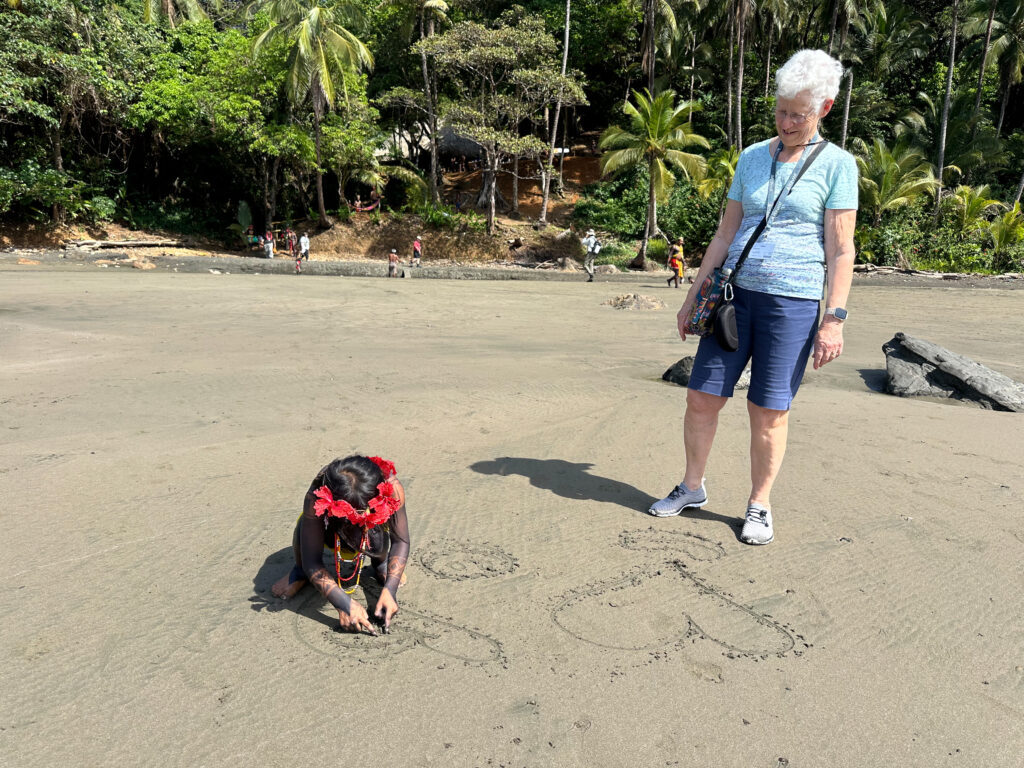

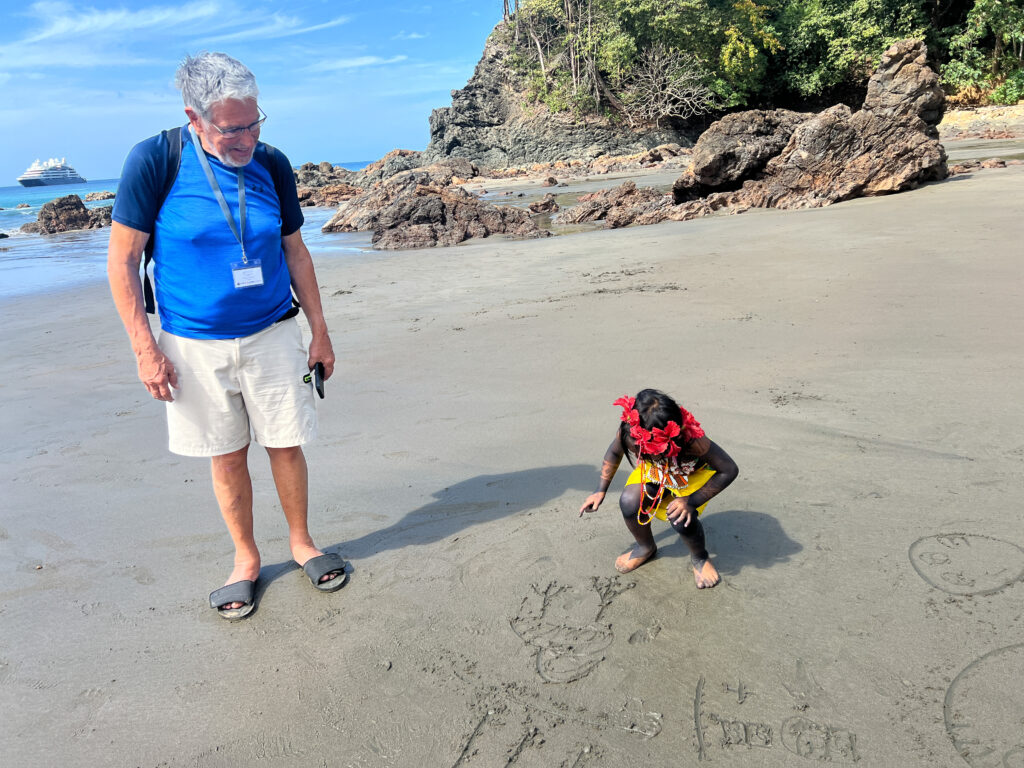
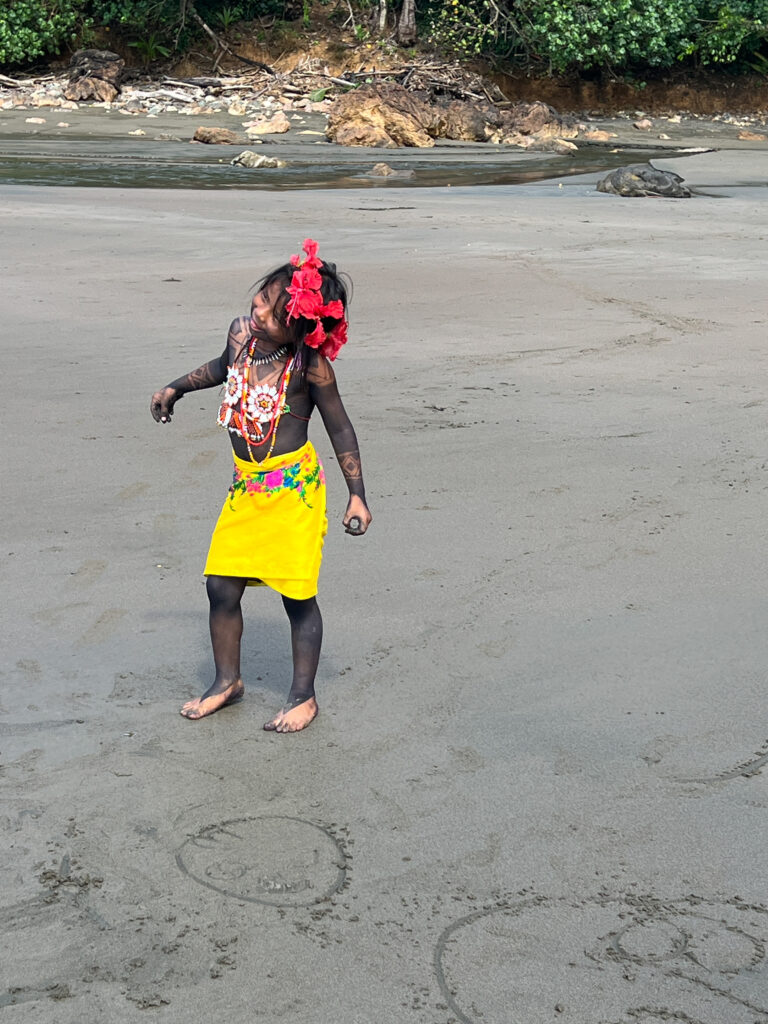
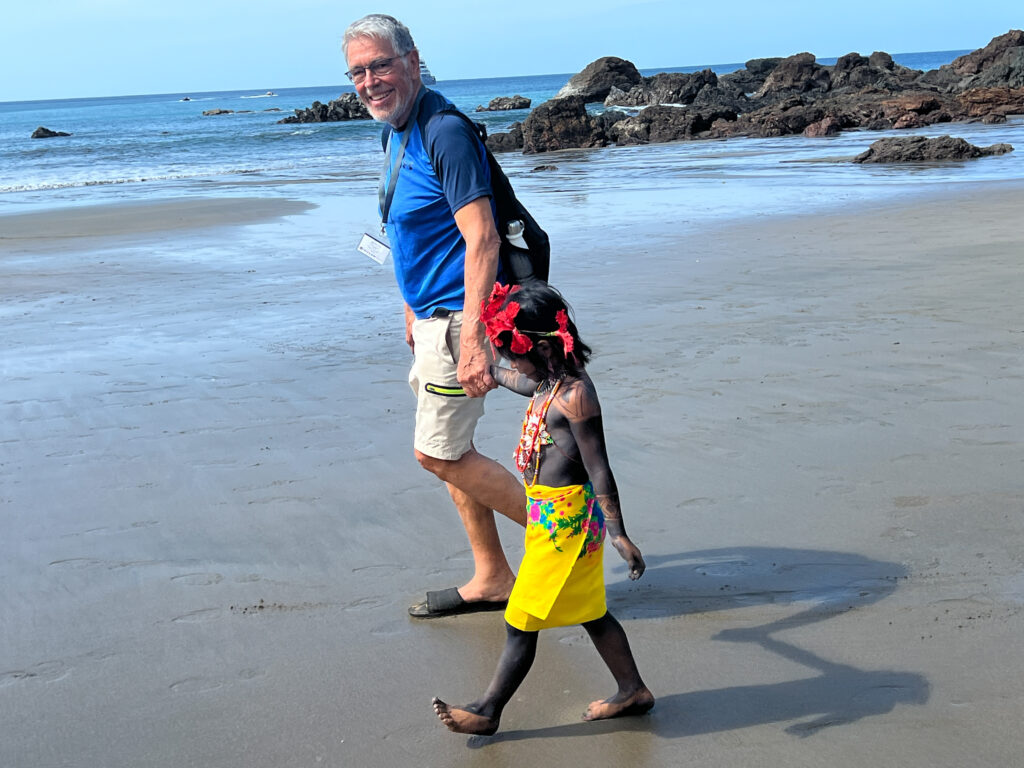
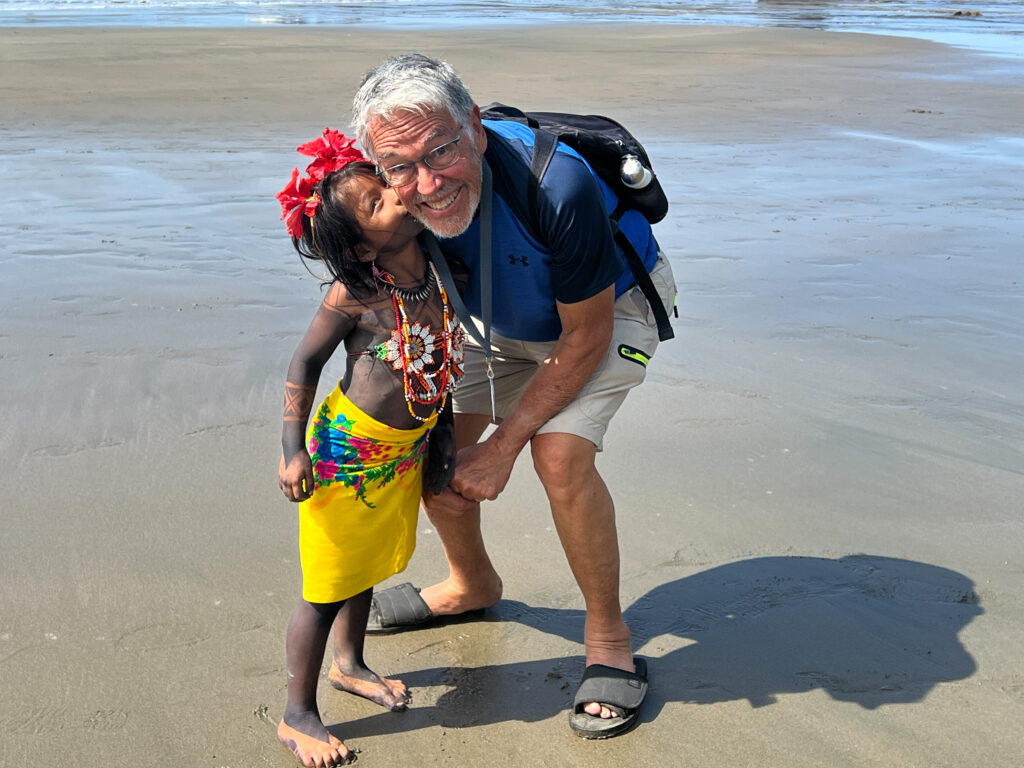
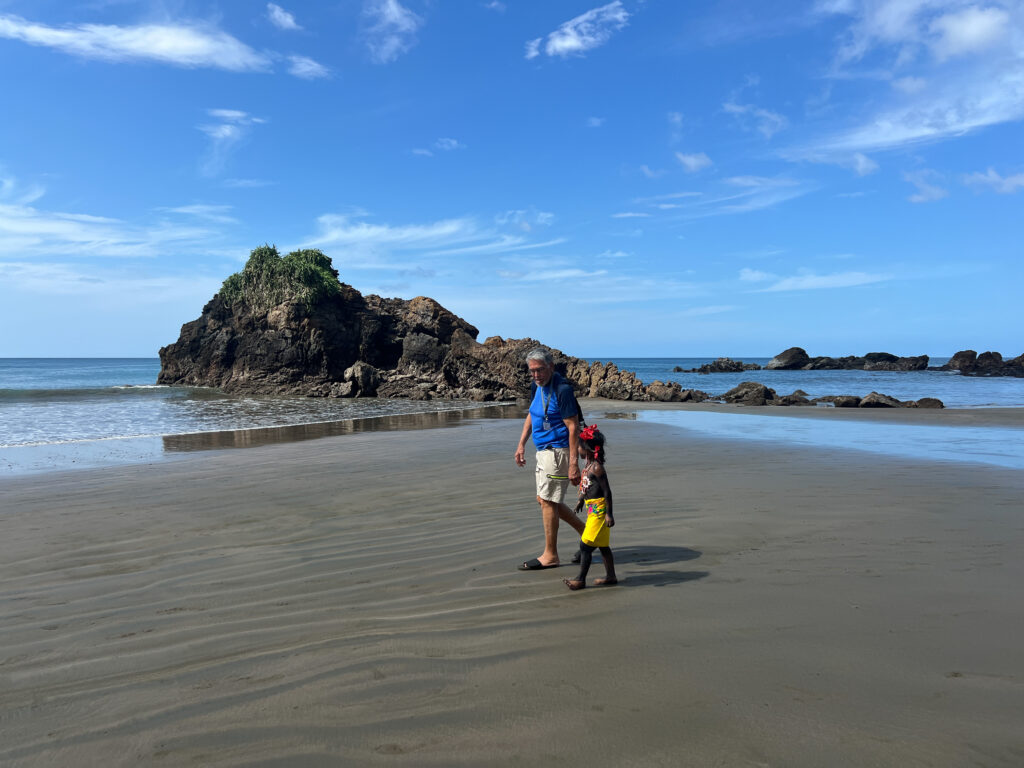
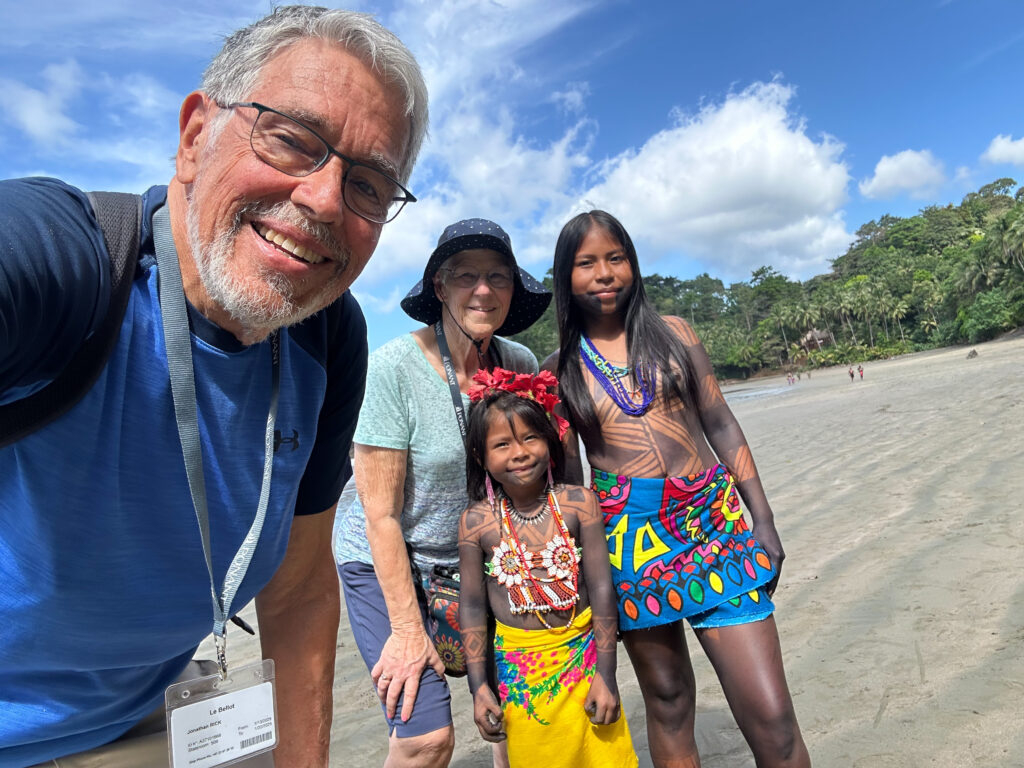
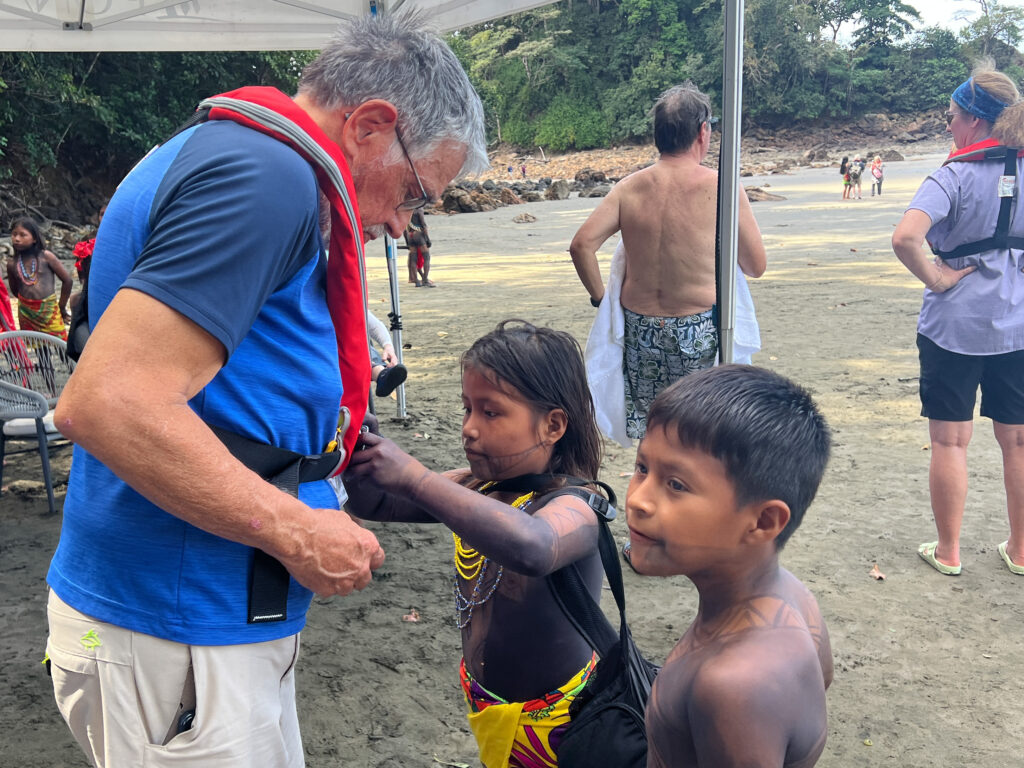
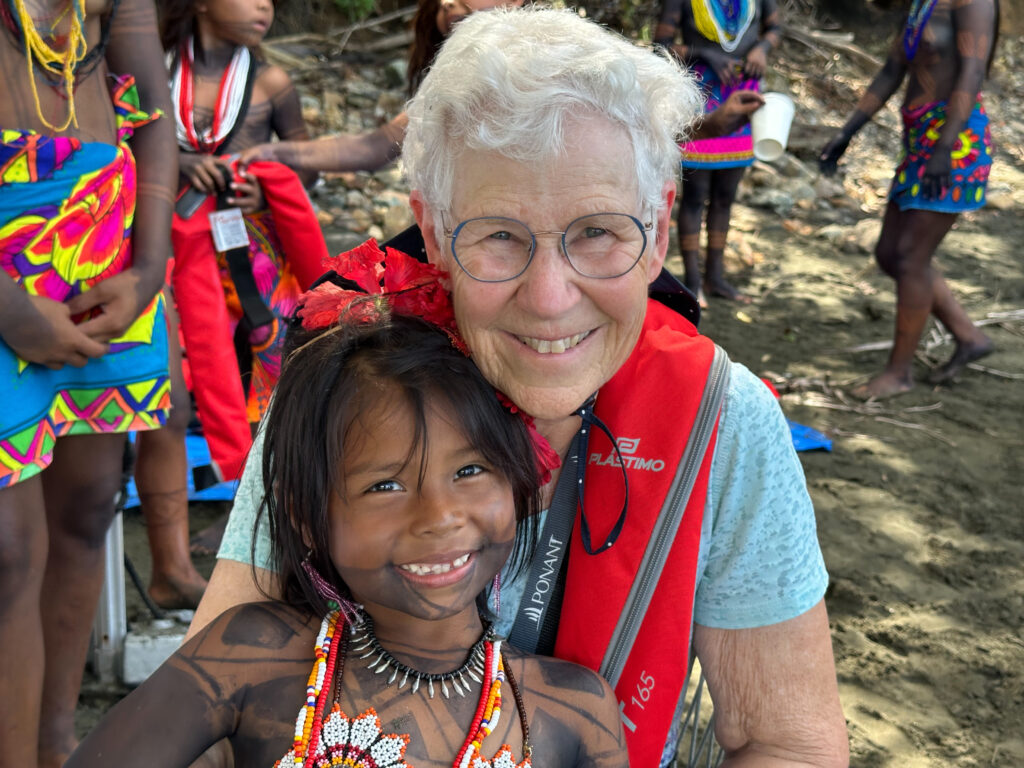
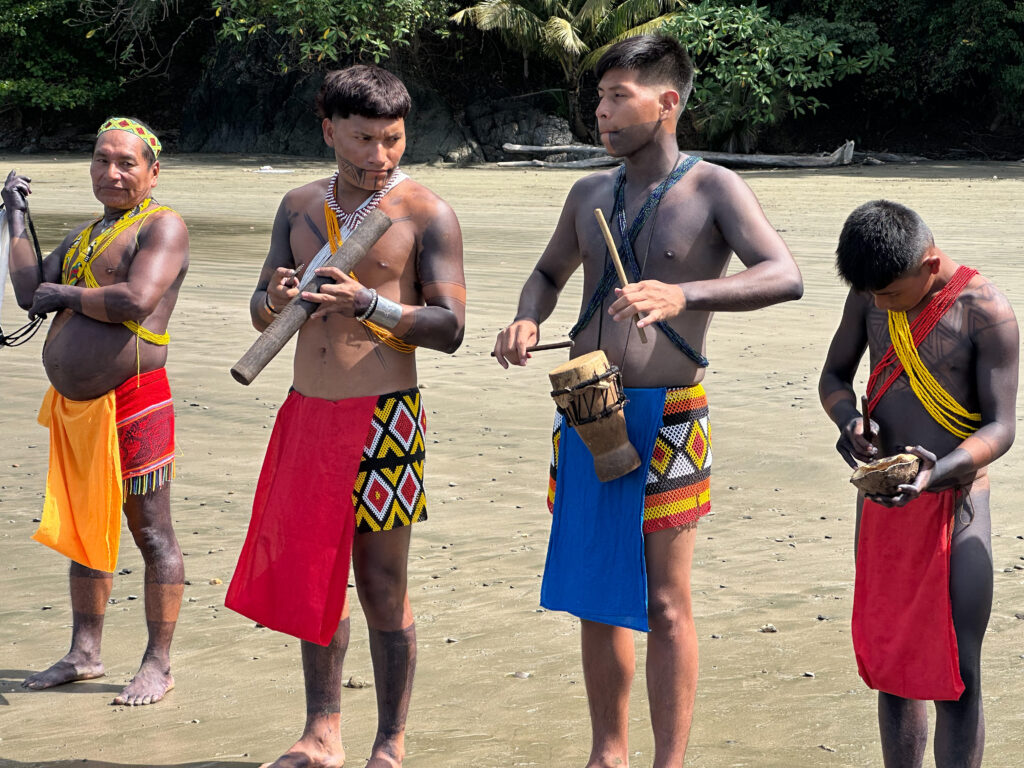
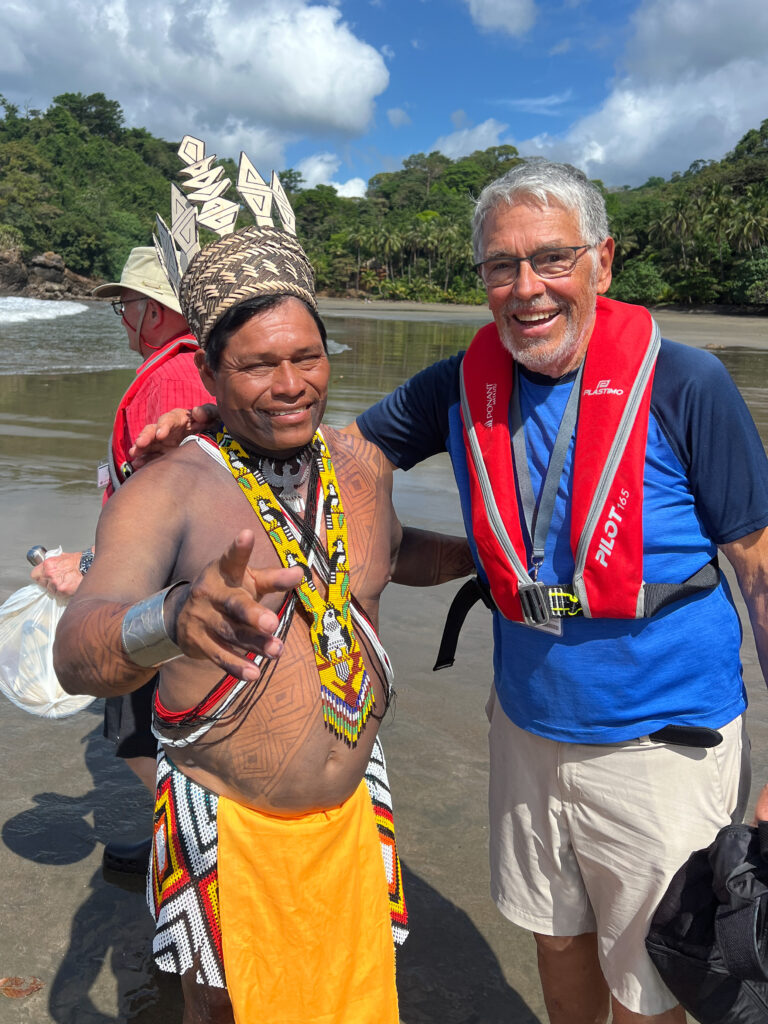
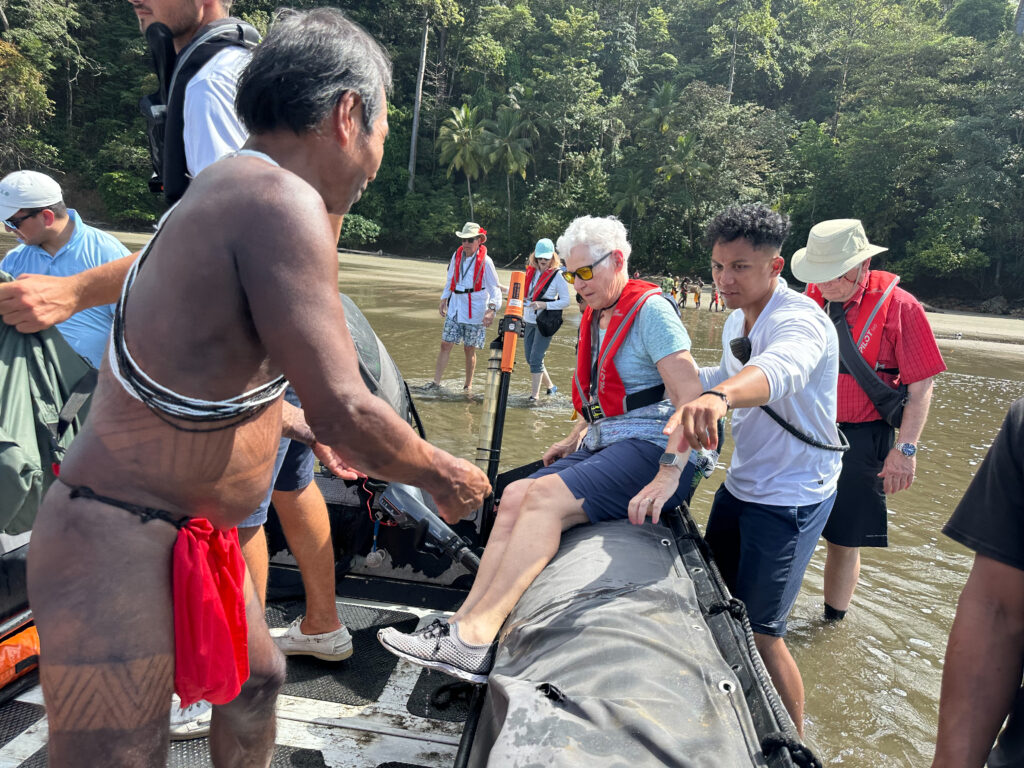

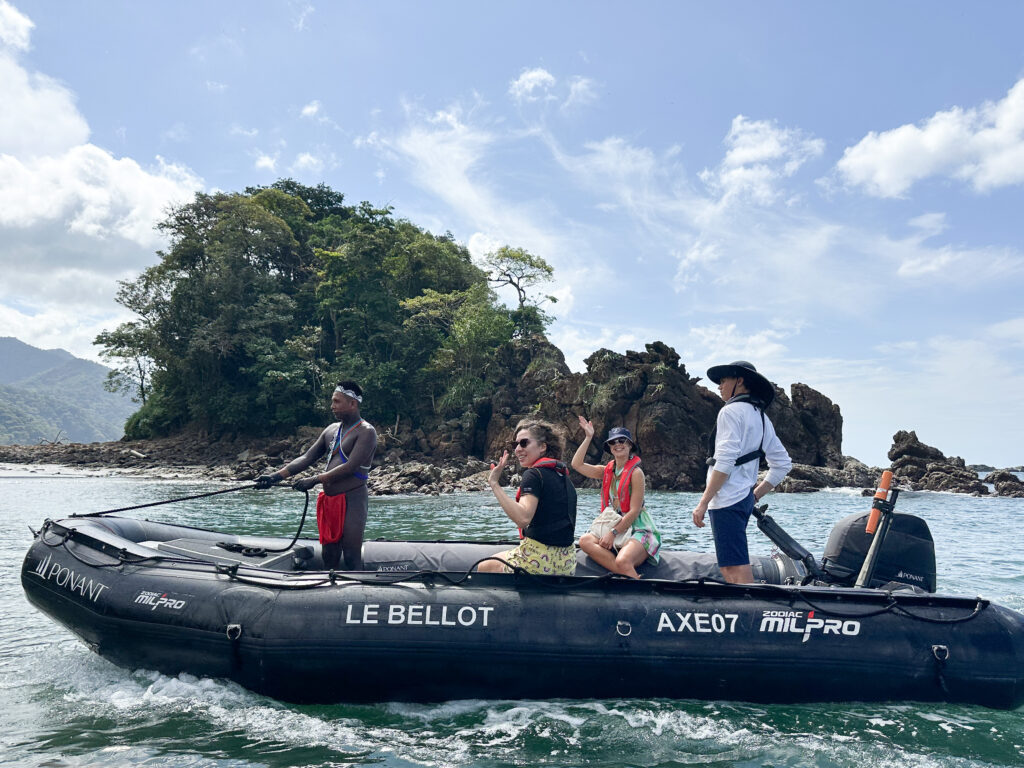
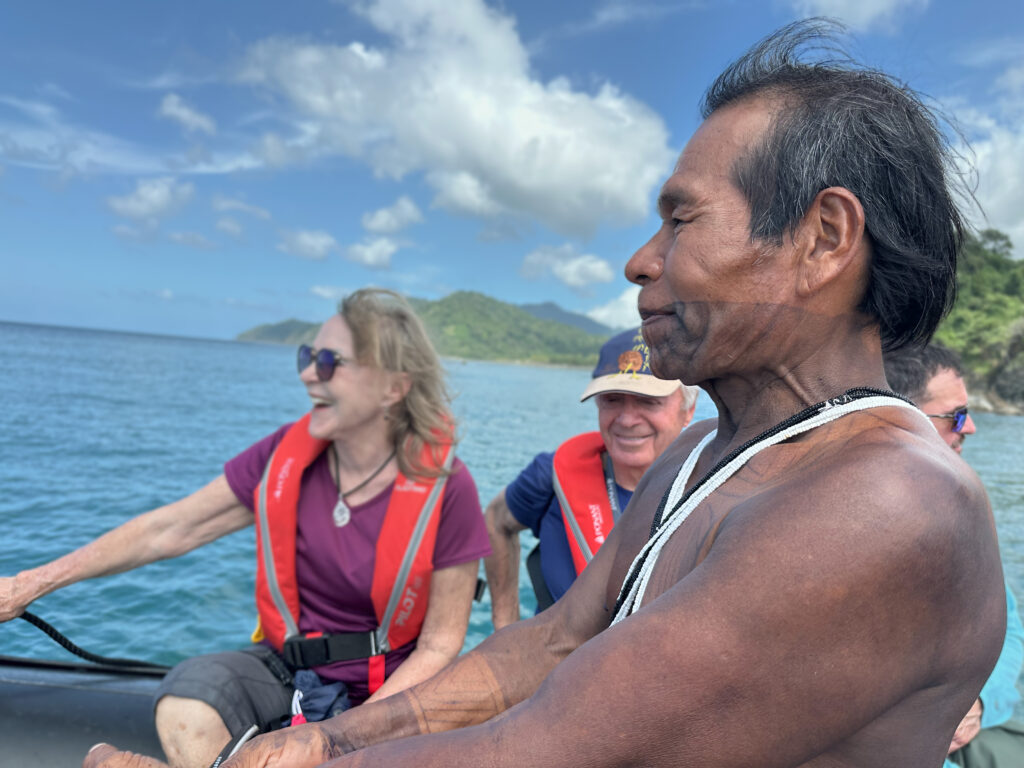
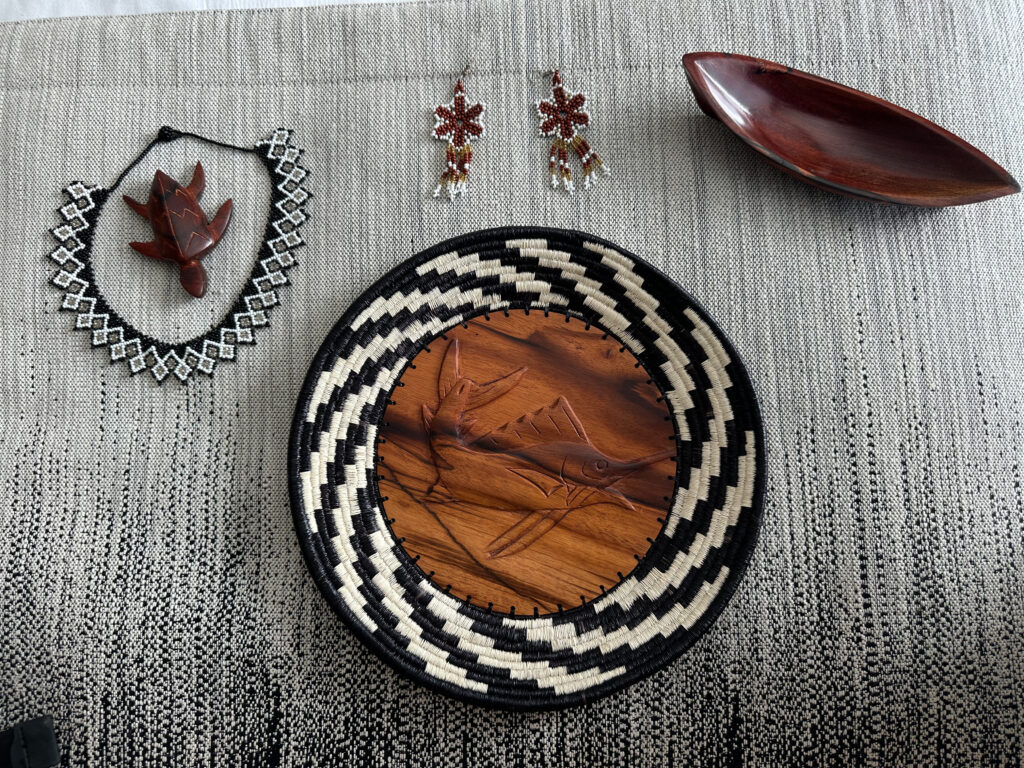
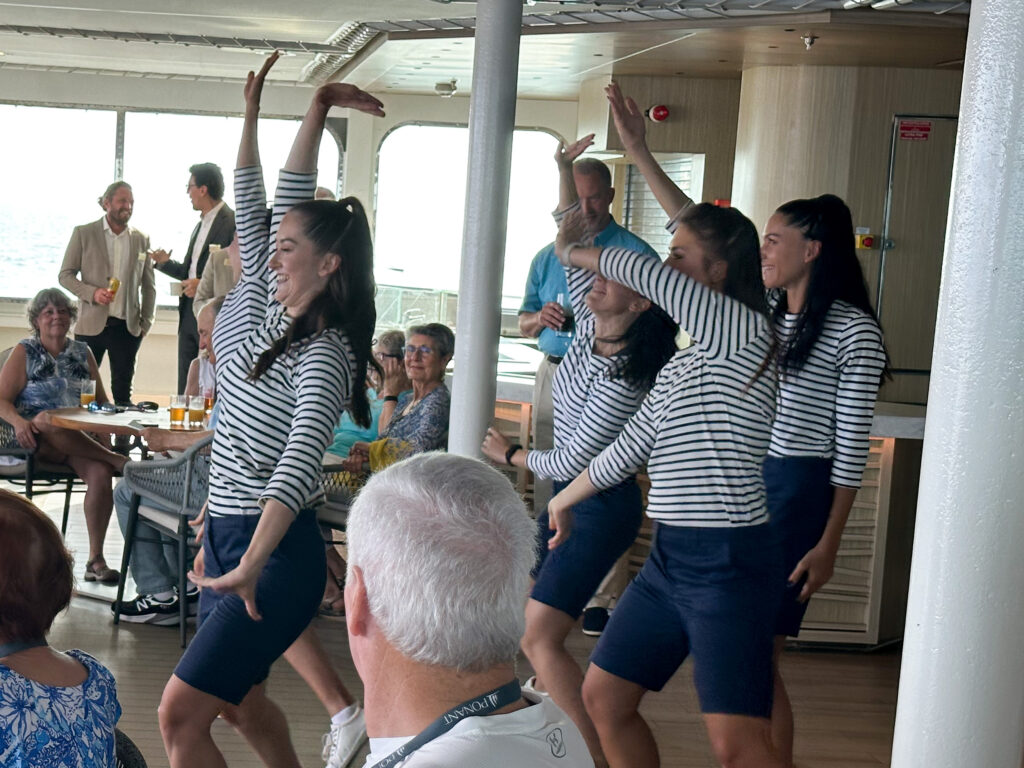
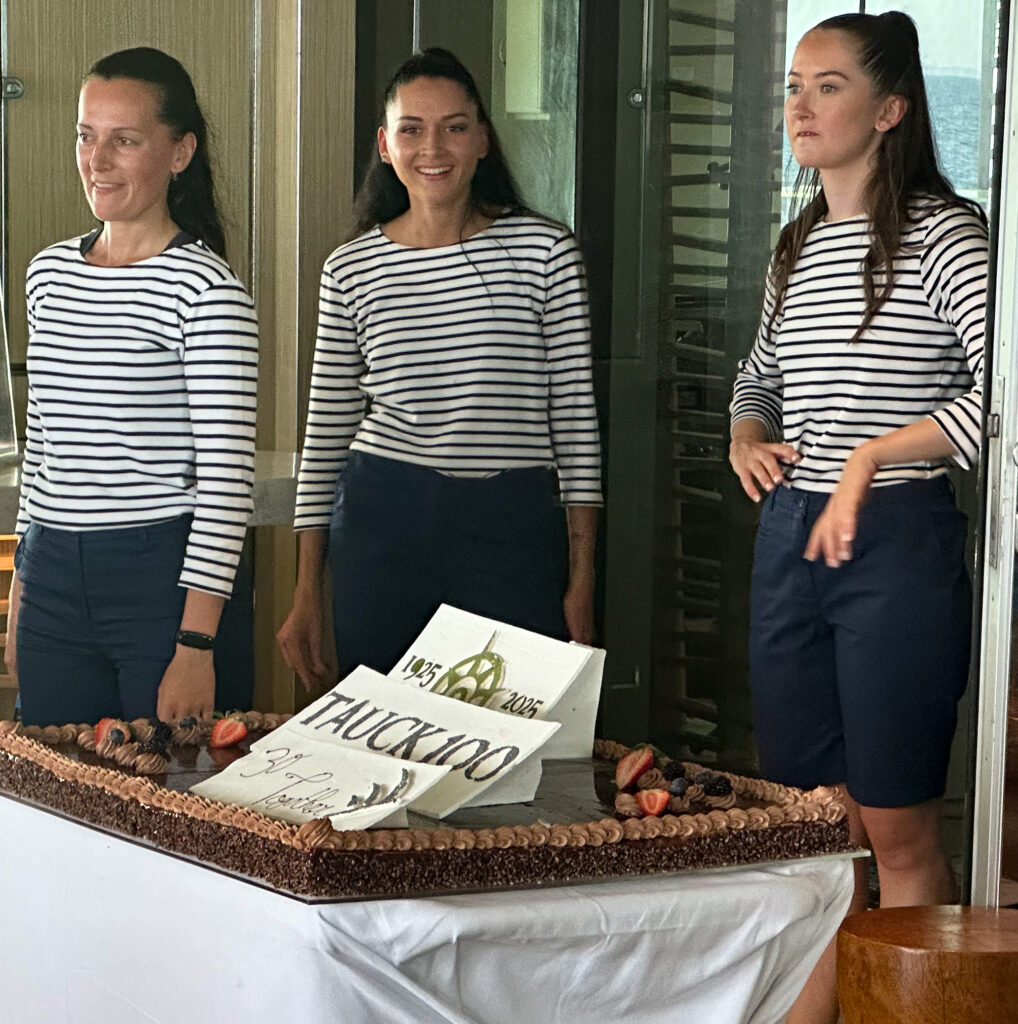
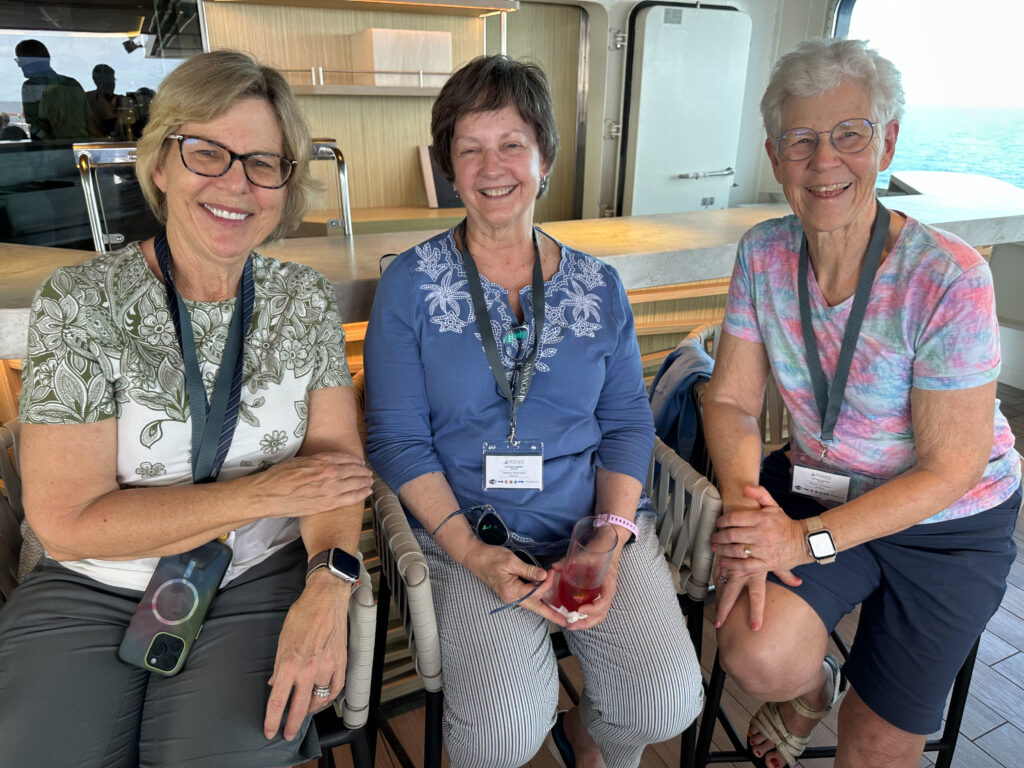
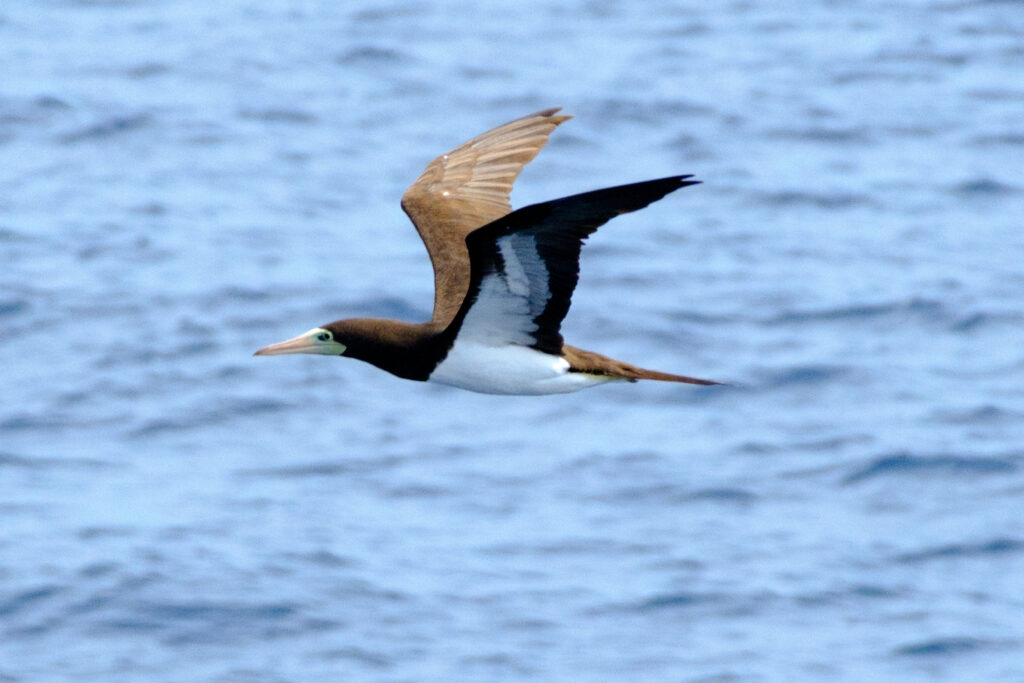
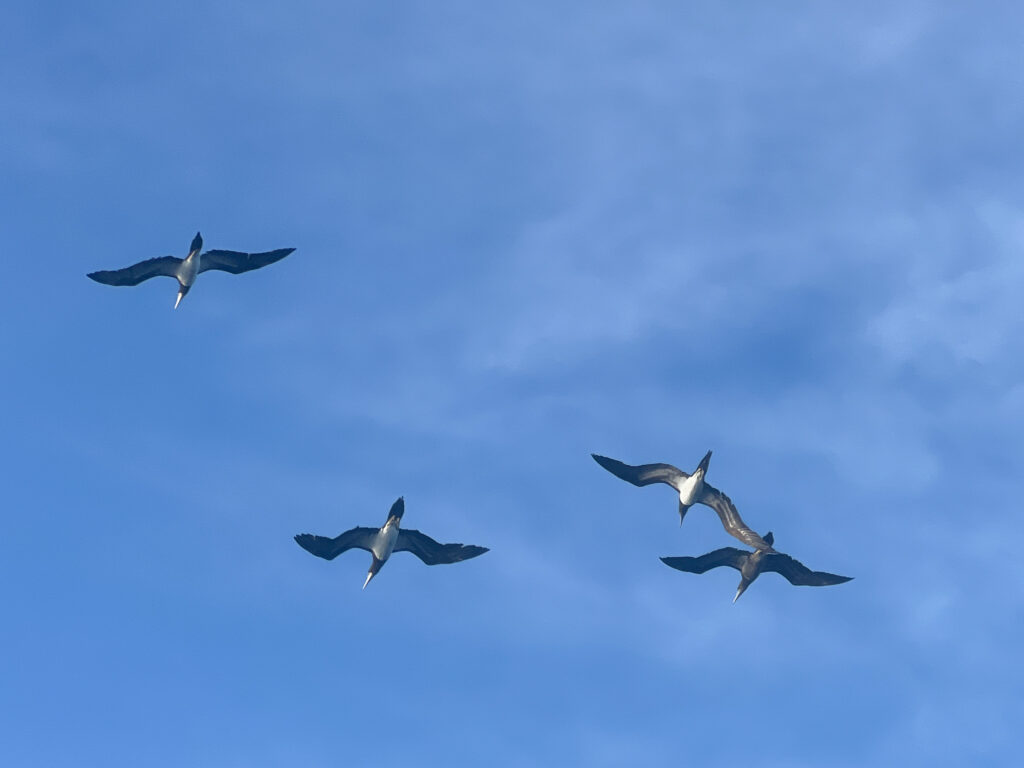
Wonderful pictures and experiences. The children are precious
Kids everywhere are cute